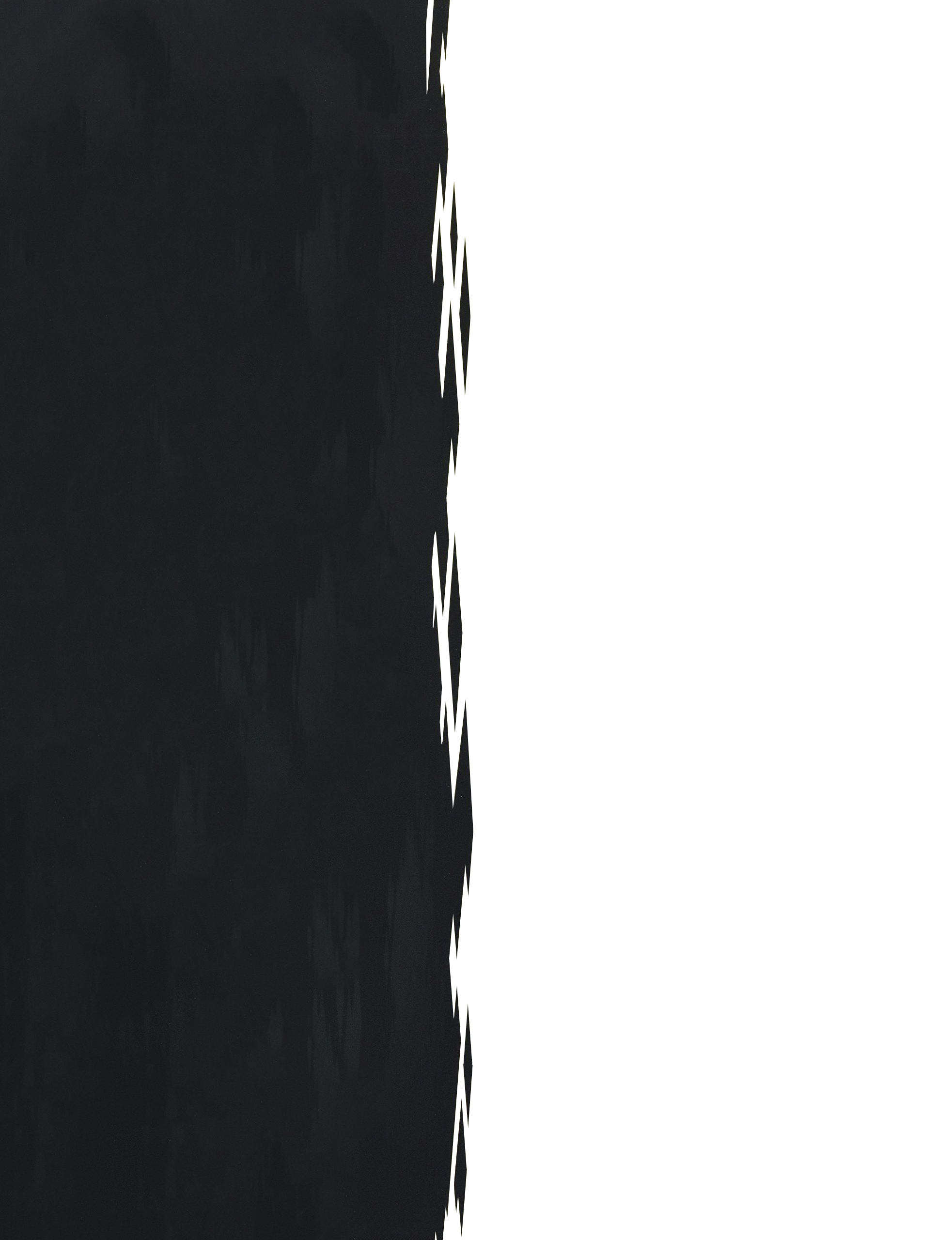




Table of Contents
PART 1
The World of Azeroth

Chapter 1: Introduction
Welcome to the world of Azeroth hero! This book is to be used as a guide to the vast world. In this guide you will find setting information, new character options, and new magic items to arm the new heroes of the land.
This book is meant to be used with the 5th edition Warcraft Heroes Handbook, as well as the other 5th edition Core Rule Books.
A Brief History
In the beginning were the titans — colossal metallic beings who brought order to the newborn universe by shaping the landscapes and races of millions of worlds. No one knows what came before them, but these benevolent rulers kept these worlds safe from the demons living in the interdimensional plane of the Twisting Nether.
But it was a ceaseless task, and the struggle with such tireless evil depressed the titan champion Sargeras so completely he came to believe the conflict could only end in the destruction of the titans' work. And thus he abandoned his duty. He released and enlisted the very demons he'd spent millennia capturing and recruited the generals Kil'jaeden and Archimonde from the Eredar race to aid him in his Burning Crusade. One major Eredar leader, Velen, rejected his offer, and he and his followers left their homeworld to become the Draenei.
More than 100,000 years ago, the rest of the titans found the world now known as Azeroth and created several races from earth and stone to complete their work there. But the vaguely Lovecraftian Old Gods wreaked havoc on the titans' plans, infecting these new races with the Curse of Flesh until, ages later, they degenerated into the fleshy dwarves, gnomes, mogu, and humans we know today. The Titans fought back, but they merely managed to imprison the Old Gods and subdue their elemental lords rather than fully end their threat. In time, the titans left.
Yet the titans didn't create everything. The tauren and trolls (and, yes, pandaren) had roamed Azeroth's prairies and forests for ages before, and around 64,000 years ago, a band of dark trolls discovered the Well of Eternity, a pool of magic deep within Azeroth's only continent of Kalimdor. Some say it was actually the blood of a Titan who fell in the war with the Old Gods, but whatever its origins, over thousands of years its energies transformed the dark trolls into the night elves, who built a graceful civilization based on the consumption of the well's magic.
The Sundering
This cozy existence ended 10,000 years ago when Azshara, the night elf queen, sought to use the well's great power to rid the world of what she considered the lesser races. Such power attracted Sargeras, who tricked Azshara into using the well to open a portal for his Burning Legion. The invasion failed through the efforts of the heroes Tyrande Whisperwind and Malfurion Stormrage, and Sargeras himself was trapped in the Twisting Nether as he passed through the closing portal. But the price was terrible.
Its magic disrupted during the battle, the well collapsed and shattered Kalimdor into the multiple continents that comprise Azeroth today. Pained by the Sundering, the earthen dwarves fell into a long slumber. Azshara and her followers survived, but only through a pact with the Old Gods that twisted them into the amphibious naga. Malfurion's intractable brother Illidan created a new Well of Eternity with three vials of the old well's essence, but the fear of another Legion invasion led to his imprisonment and the creation of the tree Nordrassil to contain the well's power and heal the world.
Centuries later, though, surviving members of the night elves' elite caste remained hopelessly addicted to magic. The other night elves banished them to the new eastern continent, where they became the light-skinned high elves and founded the new kingdom of Quel'thalas. They, too, had preserved a vial of the old well's waters in secret, and used it to create their Sunwell.
The high elves spent centuries squabbling with the local trolls until at last they discovered a tribe of humans, descended from the flesh-cursed Vrykul, who had formed their first city-state of Strom for their own protection from the trolls. Desperate for allies, the elves taught 100 humans how to harness magic, and together they ended the troll domination of the eastern continent and forged a peaceful union that lasted almost 3,000 years. Around this time the dwarves awoke, now fully altered by the Curse of Flesh.
The troll threat diminished, the younger mages founded the city of Dalaran and foolishly conjured demons in their curiosity. Fearing the consequences, Dalaran's leaders and the elves formed a secret council to elect and create a single Guardian of Tirisfal with the powers of both human and elven mages, thus acting as a godlike safeguard against Sargeras' demons. When one guardian grew too old or sick of fighting, they'd pass on the great power to a new guardian.

The Dark Portal Opens
That arrangement worked fine for almost two millennia, until the guardian Aegwynn decided to pass the power on to her child rather than the council's chosen successor. She fought demons with skill and passion like no other Guardian before her, even to the point of defeating an avatar of Sargeras himself. But Sargeras had planned this, and he transferred his spirit into Aegwynn and used it to possess her son, Medivh, years after he was born.
Sargeras used Medivh to contact the far-off world of Draenor, where Kil'jaeden had found willing recruits for the Crusade in the form of the orcs who shared the planet with the draenei. The orcs had drank the demon Mannoroth's blood and became bloodthirsty warriors bound to his will; only a few refused, including the Frostwolf chief Durotan. Together, Medivh and the orc warlock Gul'dan created the Dark Portal between the two worlds and the first orcish invasion of Azeroth began.
Medivh's apprentice Khadgar and the human champion Anduin Lothar realized Medivh's role in the conflict and decapitated him, thus inadvertently banishing Sargeras' spirit to the astral plane. For the next few years, however, the orcs poured in and the human city of Stormwind fell. Fearful of dissent, Gul'dan had Durotan assassinated, leaving his baby son Thrall to grow up as a slave to humans. Following years of struggle, the humans triumphed and the Dark Portal was destroyed.
The Following Wars
On Azeroth, humans herded the orcs into internment camps, where much of their bloodlust subsided. On Draenor, Gul'dan's former master Ner'zhul shattered the planet while trying to open portals to yet more worlds. Around a decade later, Thrall escaped his bondage and liberated the orcs as the leader of a new, hopeful Horde. He led his people across the sea to Kalimdor, where they befriended the tauren and the Darkspear trolls.
Ner'zhul had tried to escape Draenor through a portal, but Kil'jaeden captured him and transformed him into the Lich King. He sent Ner'zhul and his new death knights to attempt the conquest Azeroth anew, this time with a plague that made victims rise as the Lich King's undead Scourge.
With the leadership of the corrupted human prince Arthas, they crushed the main human kingdom of Lordaeron and razed Quel'thalas, cruelly resurrecting the ranger Sylvanas as a banshee. Arthas and the Scourge then defiled the Sunwell, summoning Archimonde and sacking Dalaran soon after.
Most of the few remaining high elves, hungry for magic and facing bigotry after receiving naga assistance, ended their age-old alliance with the humans. The newly rediscovered night elves joined the alliance of humans and dwarves, and repelled Archimonde's assault on Nordrassil alongside Thrall's Horde. Elsewhere, the orcs' long curse ended after the orc Grom Hellscream killed Mannoroth, and Sylvanas shook off Arthas' control and founded a free undead society. Yet it was a bittersweet victory, as the recently freed Illidan Stormrage, far in the north, tried and failed to stop Arthas from merging with Ner'zhul and becoming the new Lich King.
Escalation
Thus begin the current events of World of Warcraft, eventually leading to the Lich King's fall and renewed struggles with the Old Gods and the Burning Crusade. New wars and another world-shaping cataclysm followed, but it was also a great age of discovery, revealing Azeroth's Titanic origins and the long-forgotten continent of Pandaria.
Now the world has just finished the war over the lands of Pandaria and Garrosh Hellscream was defeated. After Garrosh was executed the world went into a time of peace, the Alliance and the Horde have set apart their differences in order to better their shared world.
This of course would not last forever...
Discovery of Azerite
Around 5 years after the events of Pandaria the people of Azeroth discovered an unknown ore that was later called Azerite. This ore was extremely powerful and could be used to create powerful weapons or amazing gadgets. The horde discovered this ore first, but the alliance wasnt far behind. Now the two factions race to gain as much of this ore as possible. Will the peace between the two factions last or is yet another war on the horizon.
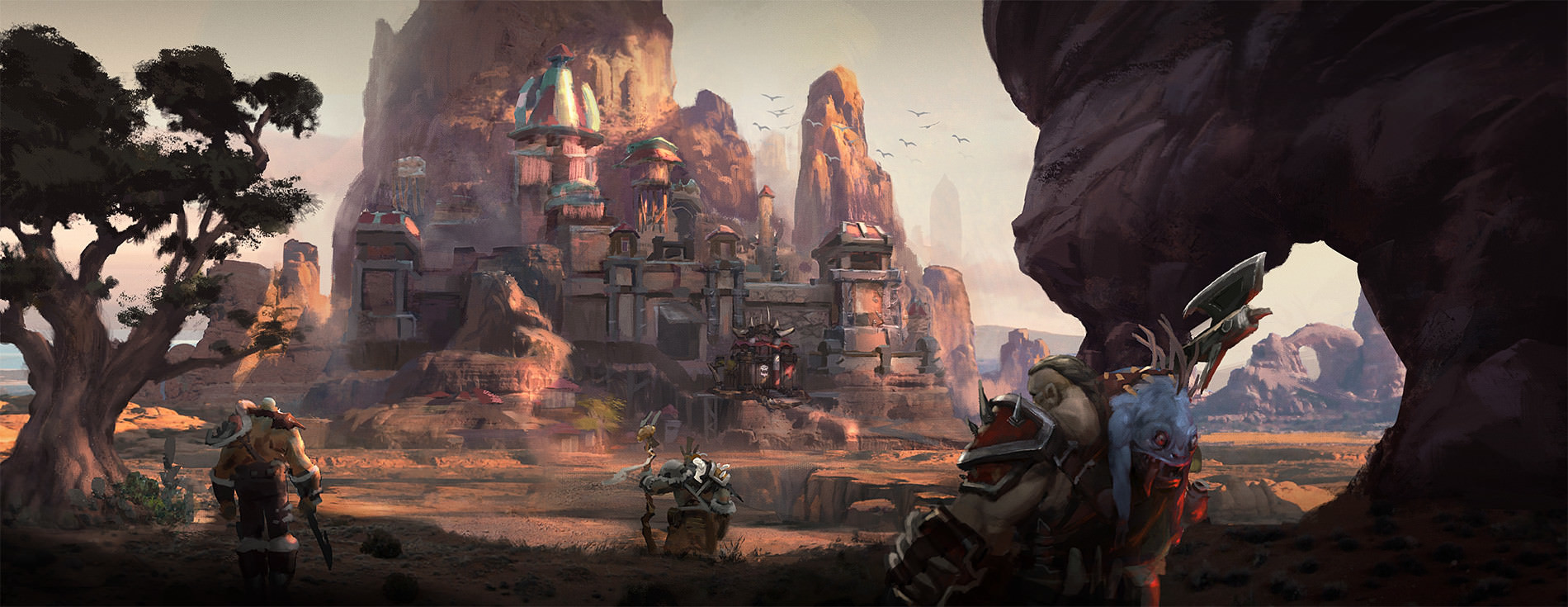

Chapter 2: The Two Factions
Azeroth is dominated by two major factions known as the Horde and the Alliance. These two groups have been at war for many years but a unofficial peace treaty has put an end to this. Which faction will you call home? Your first choice in this campaign will be to choose between the horde and the alliance. This choice will effect the story and your choices when creating a character.
The Alliance
"Humans, night elves, dwarves, gnomes, draenei, and the savage worgen make up the illustrious Alliance. Proud and noble, courageous and wise, these races work together to preserve order in Azeroth. The Alliance is driven by honor and tradition. Its rulers are champions of justice, hope, knowledge, and faith.
In a time when chaos and uncertainty reign, the Alliance remains steadfast in its determination to bring light to the darkest corners of the world." - King Varian Wrynn
The Alliance, also known as the Grand Alliance, is one of two major political factions of the mortal races in Azeroth, its counterpart being the Horde. The Alliance consists of powerful cultures and groups bound not by desperation or necessity, but by their deep commitments to abstract concepts like nobility and justice, and, striving to represent these high ideals, its many different peoples all contribute their technical, arcane, and spiritual wisdom "toward the goal of a just and peaceful world."
The memories of the allegiances and idealism of the Alliance of Lordaeron ― centered in the homonimous continent ― served as the ultimate inspiration for the new Alliance of the present day. The modern organization has the bulk of its forces on Northern Kalimdor and the south-eastern continents of Khaz Modan and Azeroth. Some of the members of the previous Alliance (such as Stormwind and Ironforge) are members of the Grand Alliance.
Organization
The Alliance have proven themselves to be fierce combatants, often giving their lives when called for. The faction is not a uniform governmental body, but is a coalition of mutual military and economic aid. Diplomacy is key with in the Alliance and decisions are traditionally made by being voted on by the Alliance's most influential members. Stormwind is described as the most powerful force in the now multiracial Alliance. With it becoming the de facto leader of the remaining human kingdoms and entering a powerful alliance with the strongest dwarven kingdom, Ironforge, Stormwind has thus been shown to be the most influential kingdom and therefore the de facto driving force of Alliance politics.
Therefore, Stormwind is undisputedly looked to for maintaining the Alliance and its policies. During the Alliance Elemental Invasion Meeting, Stormwind was where the main super powers of the Alliance conferred to discuss world issues and mutual defense. The majority of Alliance citizens also recognizes Stormwind City as the heart of the Alliance.
The High King coordinates the workings of the Alliance's armies in order to safeguard the Alliance's interests and defense. To help with organizing and leading the Alliance forces, the Alliance leader regularly confers with Grand Admiral Jes-Tereth (commander of the Alliance's fleets), Alliance battlemasters, and diplomats.
Even now, as always, humans are the glue that hold the Alliance together, being the most numerous and diplomatic of the member races. The armies of Stormwind are primarily stationed in the southern Eastern Kingdoms, securing regions such as Elwynn Forest, Duskwood, Westfall, and the Redridge mountains.
As well as having outposts and bases stationed at key points in Lordaeron, Northrend, and Kalimdor. The armies of Ironforge are mainly stationed in Khaz Modan along with their gnome allies, and the night elven armies are mainly defending northern Kalimdor from the Horde's deforestation of the Ashenvale. The remaining draenei forces are still trying to secure their new home on Azuremyst Isle, and are also stationed in Outland. The recently brought in Gilnean armies are defending themselves from the endless onslaught of the Forsaken.
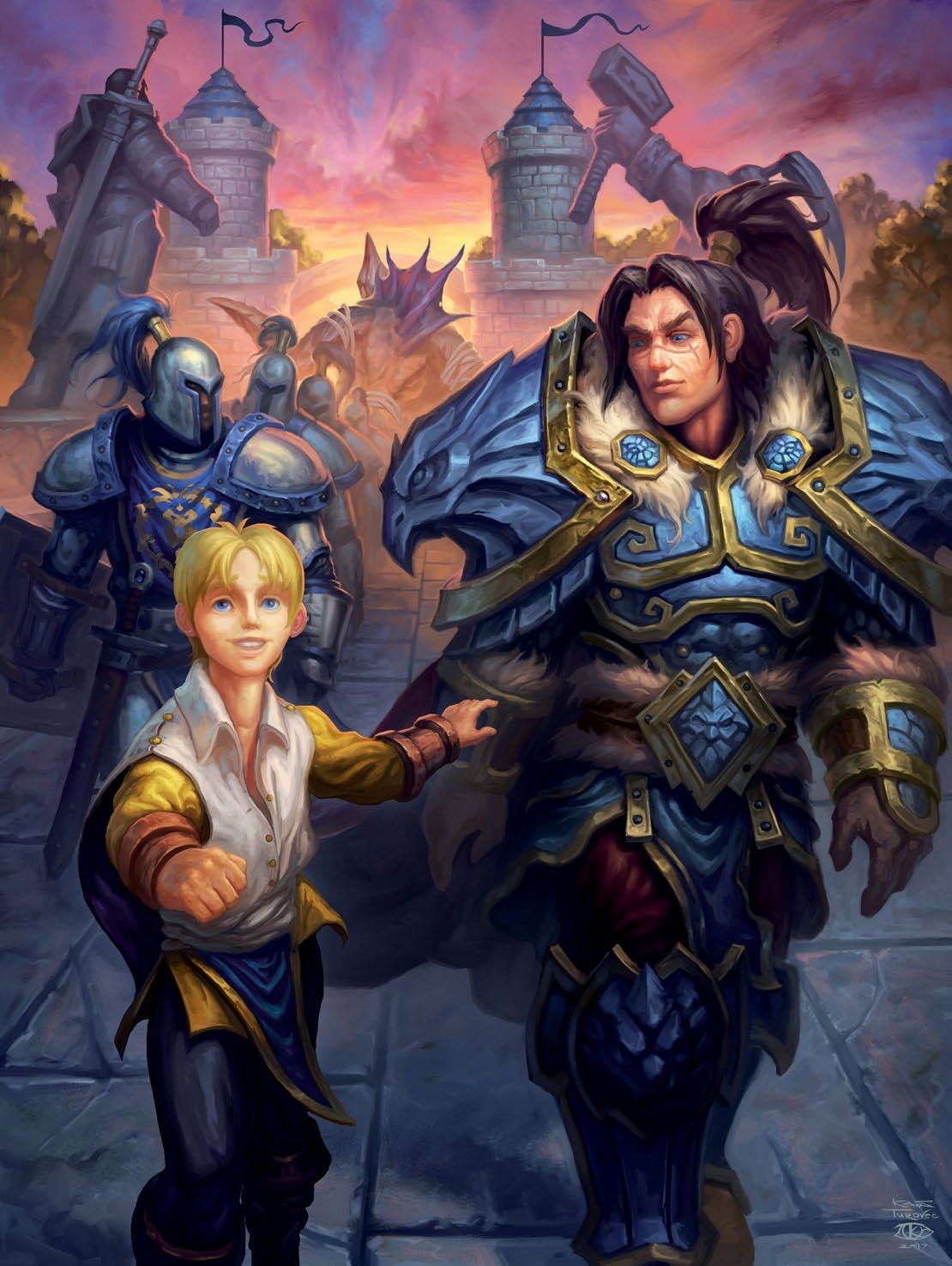

The unification
Proud and noble, courageous and wise, the Alliance races work together to preserve order in Azeroth. The Alliance is driven by honor and tradition and are bound together by a sense of brotherhood and a deep commitment to uphold their common noble ideals. The races of the Alliance look out for one another. Every member is expected to provide aid to Alliance members in need, whether they be human, gnome, or otherwise. When united against a common foe, their loyalty to one another and their resolve becomes unquestionable.
Human nations
The humans can be considered the main race of the Alliance. Ever since the Alliance was created, humans have made up its bulk. When the human nations of Lordaeron learned of the fall of Stormwind, the human kingdoms strategically united to form the Alliance of Lordaeron and finally end the threat of the vile orcish Horde.
Even when the Scourge ravaged Lordaeron, the devastated human kingdoms sought refuge in the southern kingdoms, with many brought under the protection and security of the restored Kingdom of Stormwind. The humans eventually regrouped and made Stormwind City the heart of the new Alliance.
Under the heroic leadership of King Varian Wrynn, humanity holds fast to the principles of honor and justice and seeks to maintain the honor and might of the human nations. The humans of the Alliance are determined to reclaim their lost lands and forge a new destiny for Azeroth. A destiny that many hope will usher in an age of lasting peace for the Alliance.
Kingdom of Ironforge
The Bronzebeard dwarves could be thought of as humanity's most loyal allies. After the Horde invaded the lands of Khaz Modan in the Second War, the dwarves joined the Alliance of Lordaeron to repel them. Ever since then, they have remained stalwart allies to protect Khaz Modan and all of Azeroth itself. They live in the city of Ironforge, ready to lend a hand to the Alliance whenever called upon.
They are also closely tied with the Wildhammer dwarves, who assisted the Alliance of Lordaeron as well by providing them with the air support that they used to combat Red Dragons. The only clan that did not pledge themselves to the Alliance was the Dark Iron clan: a group of dwarves that declared war on the other dwarven clans for reasons of the past. However, after the Cataclysm, a faction of them have joined the Alliance under Queen-Regent Moira Thaurissan to provide their sorcery and their strength. Control of Ironforge has since been divided equally among the Bronzebeard, Wildhammer, and Dark Iron clans through the Council of Three Hammers.
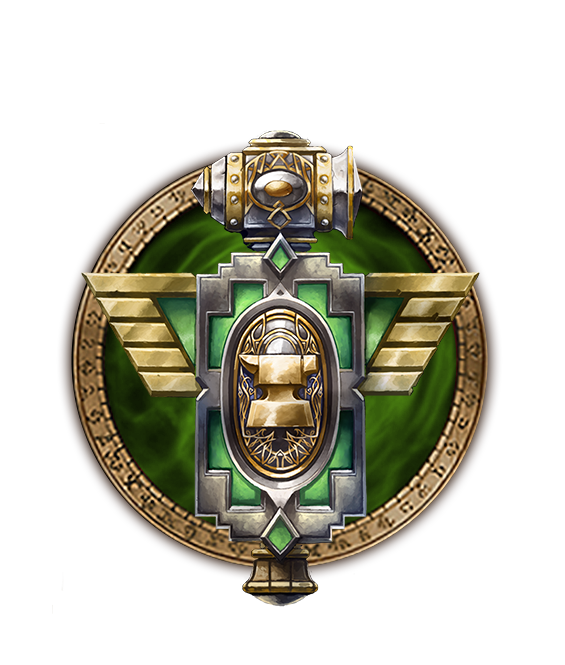
Darnassus
The night elves are the first of the Alliance not to join during the Second War but instead they had assisted the Alliance (and Horde) in ending the Third War and defeating Archimonde. Although it is not known if they had just kept this Alliance and were declared official members or joined the Alliance at a later date. The night elves also make up the bulk of the Alliance forces in Kalimdor, their ancestral lands. Conflict over the rights to Ashenvale has strained the relationship between the Horde and the night elves; evaporating what ever tenuous pact remained between them during the Third War.
Gnomeregan
The gnomes are very close friends to the dwarves; even sharing the lands of Khaz Modan with them. When the dwarves joined the Alliance, the gnomes also agreed to lend their technology to the Alliance of Lordaeron. Although they were represented by leaders of their dwarf friends and had no independent voice, they still played a vital part in the war by providing submarines and flying machines for the war effort. During the Third War, the Alliance of Lordaeron called on them for aid. Yet they were forced to decline because they were suffering from their own internal problems. Gnomeregan, the gnomes capital city, was invaded by the deformed troggs.
A great betrayal by Sicco Thermaplugg instigated their exile from their homeland. After the Scourge purged Lordaeron, the gnomes who were driven from their homes sought refuge in Ironforge and offered their services to their allies once again. Without their capital city, the gnomes looked to Ironforge for shelter and a location to plan the retaking of their once great kingdom.
After the Cataclysm, their High Tinker, Gelbin Mekkatorque, liberated the surface of Gnomeregan. Grateful to their allies for the hospitality given to them in their time of need, the gnomes have become more dedicated to the Alliance than ever before. They have even begun to adopt the teachings of the Holy Light, the primary religion of their allied neighbors.
Exodar draenei
The draenei ("Exiled Ones" in their native tongue) are a peaceful race hailing from the planet Argus. The draenei (formerly known as "eredar") were approached by the lord of the Burning Legion, Sargeras and were promised power and wealth in exchange for servitude. Though the offer tempted many, the prophet Velen sensed a trick. He was later approached by one of the wise naaru, who revealed to Velen the Burning Legion's destructive agenda and advised him to lead his people away and help assemble the fabled Army of Light: a force destined to combat the Burning Legion. Velen, with some doubt, led a faction of his eredar away from Argus and traveled through many worlds; trying to evade the Burning Legion's wrath and working to turn the Burning Legion's prophetical defeat into a reality.
They eventually crash landed onto the planet of Draenor: the home of the orcish race. For a while, the orcs and draenei lived in peace. Yet that peace ended when the Burning Legion found where the draenei had been hiding. The Legion then sowed distrust into the orcs and used them to try to wipe out their draenei neighbors. The orcs were deceived into adopting many of the Burning Legion's demonic magics and fell into a war mongering state. The orcs formed the vile Horde, nearly annihilated the draenei and warred and conquered many of the species on Draenor. The surviving draenei escaped extinction by fleeing world to world again on their Exodar.
Years later, a hijacking of their ship by blood elves forced them to crash land on Azeroth; more specifically the Azuremyst Isles. With them stranded in this new world, the draenei sought allies in the Alliance. When the Dark Portal reopened, the draenei offered their services in the Alliance's crusade against the Burning Legion in Outland. After the war, many kept their pledge of friendship to the Alliance, although some stayed in Outland to heal their former adopted home world and those they left behind.
Kingdom of Gilneas
The worgen are actually cursed humans from the nation of Gilneas. They had given the Alliance of Lordaeron support during the Second War but their stubborn king, Genn Greymane, retracted himself and all of Gilneas from the Alliance. The history of how they became worgen lies within an archmage named Arugal, who sought to summon werewolf like creatures to help battle the Scourge. The worgen could not be controlled however, and turned on their Gilnean masters. The Curse of the Worgen epidemically spread among many of the Gilnean denizens; making the majority of them worgen themselves. Around the time of the Shattering, Gilneas was attacked by the Horde (and more specifically the Forsaken).
The night elves, who were aiding the Gilneans recover from their worgen epidemic, also assisted them in combating the Forsaken. Eventually, the Gilneans could not overcome the combined might of the Horde invaders and sailed across the sea to seek sanctuary in the night elf city of Darnassus. The Gilneans were welcomed back into the Alliance and with their allies' support, they seek to reclaim their stolen lands.
Tushui pandaren
As their name suggests, these pandaren follow the path of the Tushui, which is one of the two primary philosophies among the pandaren of the Wandering Isle, and encourages living a venerable life through meditation, rigorous training, and moral conviction. Those pandaren who uphold the tenets of Tushui are drawn to the Alliance due to their similar philosophies, and are represented and led by the stalwart Aysa Cloudsinger.
The Tushui pandaren are contemplative, focused on abstract ideals of justice and morality, and believe that a principled life is the only one worth living.
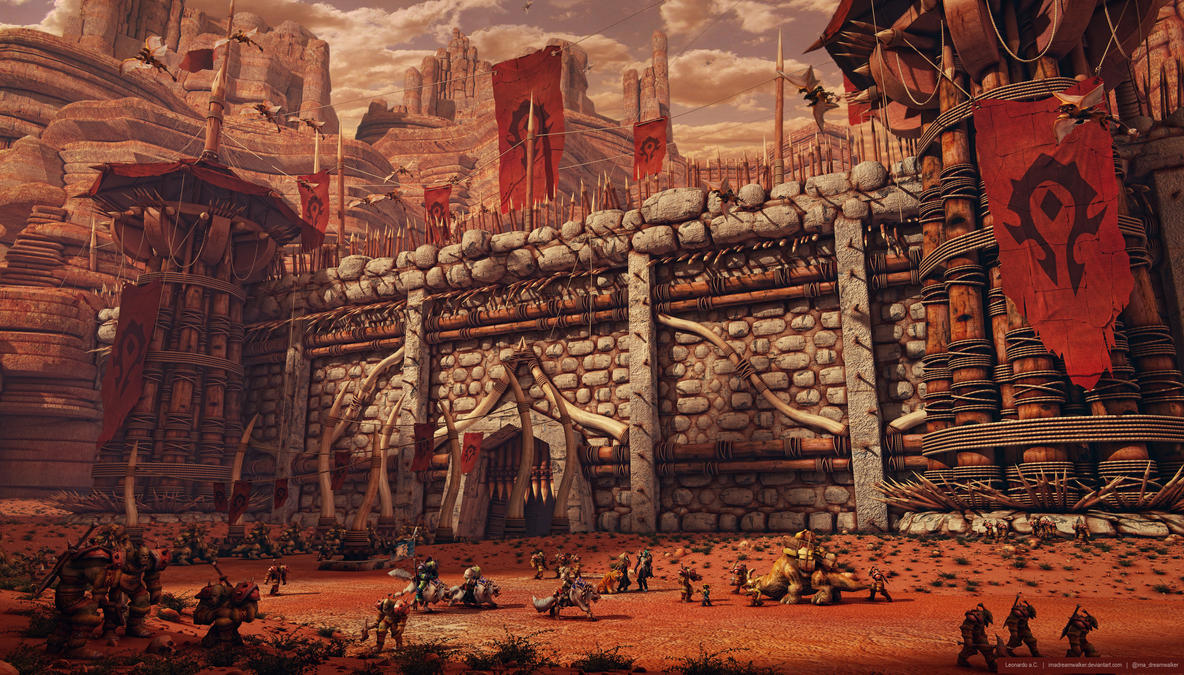

The Horde
The Horde is made up of orcs, forsaken, tauren, trolls, blood elves, and most recently, goblins. Misunderstood and cast aside, these diverse and powerful races strive to overcome their differences and unite as one in order to win freedom for their people and prosper in a land that has come to hate them.
In the Horde, action and strength are valued above diplomacy, and its leaders earn respect by the blade, wasting no time with politics. The brutality of the Horde's champions is focused, giving a voice to those who fight for survival.
The Horde (also called the New Horde, Thrall's Horde or Vol'jin's Horde) is one of the two major political factions of the mortal races in Azeroth, its counterpart being the Alliance. The Horde, a faction led by off-worlders and composed of outsiders has survived these obstacles by bonding together, fighting as family, comrades, or even uneasy allies.
During Garrosh Hellscream's reign, the faction was plunged into a state of civil war, divided between Hellscream's pan-orc government he referred to as the "True Horde" and the Darkspear Rebellion, comprised of the remaining Horde races, as well as orcs that have decided to oppose Garrosh, under leadership of Vol'jin.
After the Siege of Orgrimmar upon the defeat of Garrosh, Vol'jin was chosen as the new Warchief of the Horde with every leader supporting the choice, even Thrall himself. This also marks the first time, when the Warchief's position was held by a person that isn't an orc, signifying a sense of a unity between all the member races of the faction, in Vol'jin's own words - The Horde is a family.
Organization
Before the tauren and trolls joined the Horde, the Horde was also called the Orcish Horde. Although the Horde is a coalition of diverse races with different cultures, agendas, and values, one thing remains constant with in the Horde: respect is earned by the blade. Orgrimmar is the obvious center for now, and the Warchief of the Horde stands as the undisputed leader. The warchief holds dominion over the entire Horde. The warchief maintains the Horde, is able to declare war for the entire Horde, take any precaution to ensure the stability and security of the Horde's member states, and has the final say in the induction of new Horde members.
The Horde makes no compromises when it comes to excellence, and the power and ferocity of their warriors is legendary. Misunderstood by many as evil, the Horde possesses a strong code of honor and strict laws for disobedience.
Blood in Blood Out
All members of the Horde have to swear a blood oath to join the faction and are thus obligated to follow the warchief's commands and support the warchief in war if the warchief calls upon them for aid. The position of warchief can be attained by having the previous warchief chose a successor or challenging the current warchief to a Mak'gora: a prearranged duel with deadly weapons between two people following a formal procedure in the presence of witnesses and traditionally fought until one party yields or is killed, usually to settle a quarrel involving a point of honor. Above all else, the title warchief is granted to those who display strength and decisive action. Warchiefs must be able to gain respect via combat effectiveness and martial conquests but also have enough tact to keep the Horde united and stable.
The warchief may accept ambassadors and advisors from all the different tribes and members of the Horde to makes sure their voice is heard in the running of the fledgling hegemony but ultimately, only the warchief may have the final say in matters concerning the entire Horde.
Each race within the Horde may choose a single leader to govern their people and their people's kingdoms and also to represent their people in the high Horde echelon.
Grunts, Berserkers and Tauren warriors fighting together in the Third War Equal in size, the Horde also has its complexities, much like the Alliance. The main six races of the blood elves, tauren, undead, trolls, goblins, and orcs have countless friends among the races of Azeroth: the Revantusk forest trolls of the Hinterlands, the Stonemaul Ogres and various individuals like the Mok'Nathal beastmaster Rexxar.
More Then Meets The Eye
Despite their somewhat monstrous appearance, the majority of the Horde is not evil; much like the Alliance, it is comprised of diverse factions and individuals who possess a wide range of values and virtues. Even so, there is one expectation that must be met when joining the Horde: regardless of gender or station, all are expected to pull their own weight and give their talents for the betterment of the Horde. When weakness is a liability to the future of the Horde, it is the duty of the strong to usurp control from the incompetent and redeem the Horde. Lok'tar ogar! Victory or death - it is these words that bind one to the Horde. For they are the most sacred and fundamental of truths to any warrior of the Horde. For the Horde, failure is not an option.
Culturally, orcs and tauren believe in redemption more than most other races on Azeroth and are willing to give almost anyone a chance, regardless of reputation. The Revantusk seem to have even accepted, (if not at least tolerate) their ancient enemy the blood elves. Largely because of these beliefs, a number of mortal races and many diverse factions can be found in service to the Horde.


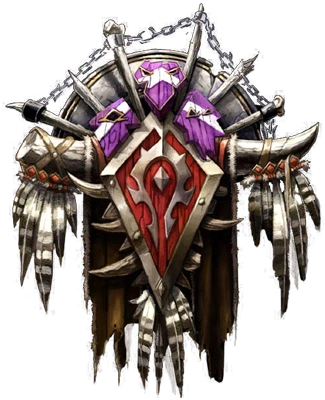
The unification
The Horde in Kalimdor, which acts as the bulk of the Horde's forces, serve under the Warchief's leadership. They include most of the orcs, the tauren, the Darkspear trolls, the goblins of the Bilgewater Cartel, the Huojin Pandaren, and a number of less prominent races within the Horde - such as the Stonemaul ogres. The Horde in the Eastern Kingdoms, comprising of the Forsaken and the blood elves, act with more independence from the Kalimdor Horde but ultimately answers to the warchief out of necessity for the Horde's support.
These races all see the Horde differently. Some see it as an instrument of vengeance, hellbent to carve out a future for its people. Others see it as a refuge for those who need shelter, a commonwealth of the downtrodden, built for mutual support. While some view it as an alliance of convenience, a confederacy of unlikely partners free to pursue their own agendas.
Whatever their motivations, they are united to claim Kalimdor and the Eastern Kingdoms for themselves in order secure key provisions and supplies needed to support their people, and forcibly remove Alliance incursions from their own lands.
Nation of Durotar
The orcs of Durotar follow High Overlord Varok Saurfang. Their culture is split mostly between the orcs' warrior spirit and their shamanistic roots, which has recently wrought on conflict between the younger and older generations. Dedicated to carving out an existence in a world that has come to largely revile them, the orcs have recently turned their attention to reinvigorated conquests. Ashenvale and Stonetalon are among their first targets, and ultimately Warchief Hellscream intends to unite the entirety of Azeroth under a single banner.
The Forsaken
The Horde of the Eastern Kingdoms was initially next to non-existent, with only the Frostwolf orcs and other smaller forces in operation around the continent. In recent years, however, the Horde's presence has been bolstered by the inclusion of the Forsaken of Eastern Kingdoms and the blood elves of Quel'Thalas. While considered members of the Horde, their bonds with the western Horde are perhaps not on the same level as the orcs, trolls and tauren.
The Forsaken were once part of the Scourge, forced into mindless servitude under the Lich King. After the Lich King's grip began to weaken, the banshee queen Sylvanas Windrunner broke free from his will, and went on to both free and rally other undead beings to join her own empire of undeath, dubbed the "Forsaken." Under Lady Sylvanas' leadership, the Forsaken used any means necessary to conquer the fallen kingdom and remove both the dreadlords and other foes threatening their dominion. After expelling the Scourge from capital city and massacring the last remaining holdouts of the Alliance, they took over the catacombs of the former capital, renaming the city "Undercity."
With the backing of the tauren, Thrall warily accepted the Forsaken into the Horde, though this alliance of convenience has been tested - great betrayal at the hands of Grand Apothecary Putress has put the Forsaken on a tight leash, made tighter by the new Warchief's less lenient stance on their modus operandi.
Tauren tribes
The noble tauren of Kalimdor are a race that had hunted the lands of central Kalimdor for generations, however when Thrall and his orcs had arrived onto the lands of Kalimdor they had already been driven near extinction by the marauding centaur that rampaged through their lands. Under the leadership of their high chieftain Cairne Bloodhoof and the young warchief Thrall, the tauren managed to drive back most of the centaur. Since then, Cairne has pledged his people to the Horde. After Cairne's death, the young Baine Bloodhoof has arisen to take his father's place and lead the tauren into a brighter future. With the recent Alliance incursion into the Barrens, the tauren have created a mighty gate to protect their homeland of Mulgore. Even if their Horde allies turn down dark paths during this war, the tauren have resolved to be the light that guides them through it.
Darkspear tribe
The Darkspear of the Broken Isles have a very savage and dark history studying voodoo arts and worshiping the loa, however after Thrall had saved their tribe from extinction, Vol'jin son of Sen'jin pledged his tribe to the Horde. Some trolls have now began to study shamanism and more recently druidism, some of these trolls even mix shamanism with voodoo arts, most of the members of the tribe have or are attempting to give up the ways of cannibalism and the other traits of their race's darker history. After retaking much of their territory from the treacherous Zalazane, the Darkspear have been invited to join a revitalized troll empire under the Zandalari's leadership - though Vol'jin has declined this offer.
Kingdom of Quel'Thalas
The blood elves of Quel'Thalas preside over the other major kingdom of the Eastern Horde. After the Scourge onslaught essentially culled the high elven race, with over 90% of their people killed, the remaining 10% vowed to avenge the destruction of their once-great nation and dubbed themselves the "blood elves" in honor of their fallen brethren. After retaking their homeland with the volatile new powers the magisters advocated, the kingdom of Quel'Thalas was offered aid from an unlikely source - the Forsaken, whose queen, Lady Sylvanas, had lost her life in her attempt to protect Quel'Thalas from the Scourge. With their assistance, the blood elves were able to fend off the lingering Scourge in the kingdom, and were able to enter the Horde as an equal nation of its own.
Quel'Thalas suffered another dark hour in recent years, when its twisted scion Kael'thas Sunstrider attacked his homeland in a mad bid to usher the Burning Legion's master into Azeroth. He was put to death for this on Quel'Danas, and Lor'themar Theron has thus become the sole leader of the blood elven people.
Bilgewater Cartel
The cunning Bilgewater Cartel goblins from Kezan, one of the most (if not the most) powerful goblin cartels that dominates trade in the south seas, have recently joined the Horde. After Deathwing assaulted Kezan and the goblins were forced to flee, their first escape ships were attacked by an Alliance fleet. With a common enemy, the goblins assisted the captive former Warchief Thrall in breaking his bonds and obliterating the Alliance on the Lost Isles. Their future was tested when their leader, the angered Trade Prince Gallywix, attempted to defeat Thrall and take over Azshara for himself, though this ultimately ended in failure. Thrall mercifully allowed him to retain his position as Trade Prince, and thus the Bilgewater goblins were accepted into the Horde.
Huojin Pandaren
These pandaren follow the path of the Huojin, a philosophy among the pandaren that inaction is the greatest injustice, and that there is no shame in defending one's homes and loved ones regardless of cost. Those pandaren who follow the path of Huojin are allies of the Horde, and are represented and led by the intrepid Ji Firepaw, a staunch adherent of this philosophy.
The Huojin are quick to act and quicker to fight for what they believe in. Impulsive and practical, they feel that the ends can justify the means.
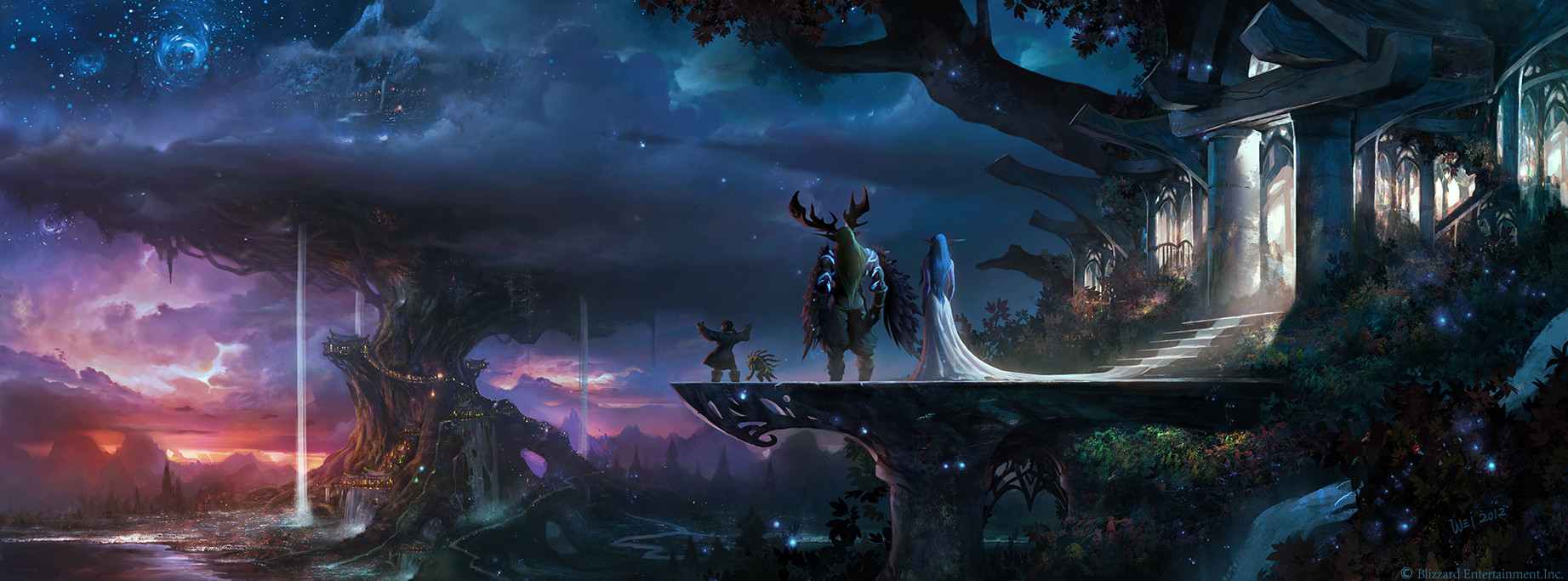



Chapter 3: Geography
The world of Azeroth is comprised of five major continents, with a number of smaller islands scattered about them. Northrend is located in the north, Kalimdor in the west, the Eastern Kingdoms in the east, Pandaria in the south, and the Broken Isles near the center, just southeast of the Maelstrom. The Eastern Kingdoms are made up out of two large landmasses - the southern one includes Azeroth and Khaz Modan, and the northern land of Lordaeron.
At one time, all of the five major continents were part of one large continent known as Kalimdor, with a large magic lake known as the Well of Eternity in the center. When the well exploded at the conclusion of the War of the Ancients, this continent was shattered, leaving behind the continents and islands that exist today.
The Forbidding Sea is the expanse of water to the east of the Eastern Kingdoms and the Veiled Sea sits west of Kalimdor. South of Pandaria lies the Uncharted Sea. Between the continents lies the Great Sea, while at its center lies the Maelstrom — a massive chaotic whirlpool over the area where the Well of Eternity once stood. It's believed that a part of the Well still exists in the Rift at the bottom of the vortex. It has been active since the Great Sundering ten thousand years ago and still there is no foreseeable natural end to its existence.
The world of Azeroth may have lands located at the other side, beyond the Veiled Sea to the west of Kalimdor, and beyond the Forbidding Sea to the east of the Eastern Kingdoms. No one is sure or has knowledge of what (if anything) lie on the other side of Azeroth. Chronicle Volume 1 mentions that Ancient Kalimdor before the Great Sundering was the largest continent at the time, implying more continents than just Kalimdor existed at the time.
-
Highmountain on the Broken Isles and Mount Neverest in Kun-Lai Summit are two of the tallest mountains on Azeroth.
-
Azeroth also has two moons, the White Lady and Blue Child.
-
When Malygos diverted the magical powers that coursed beneath Azeroth to the Nexus, the world's crust splintered, and the resulting unstable rifts tore the very fabric of the magical dimension of the Twisting Nether
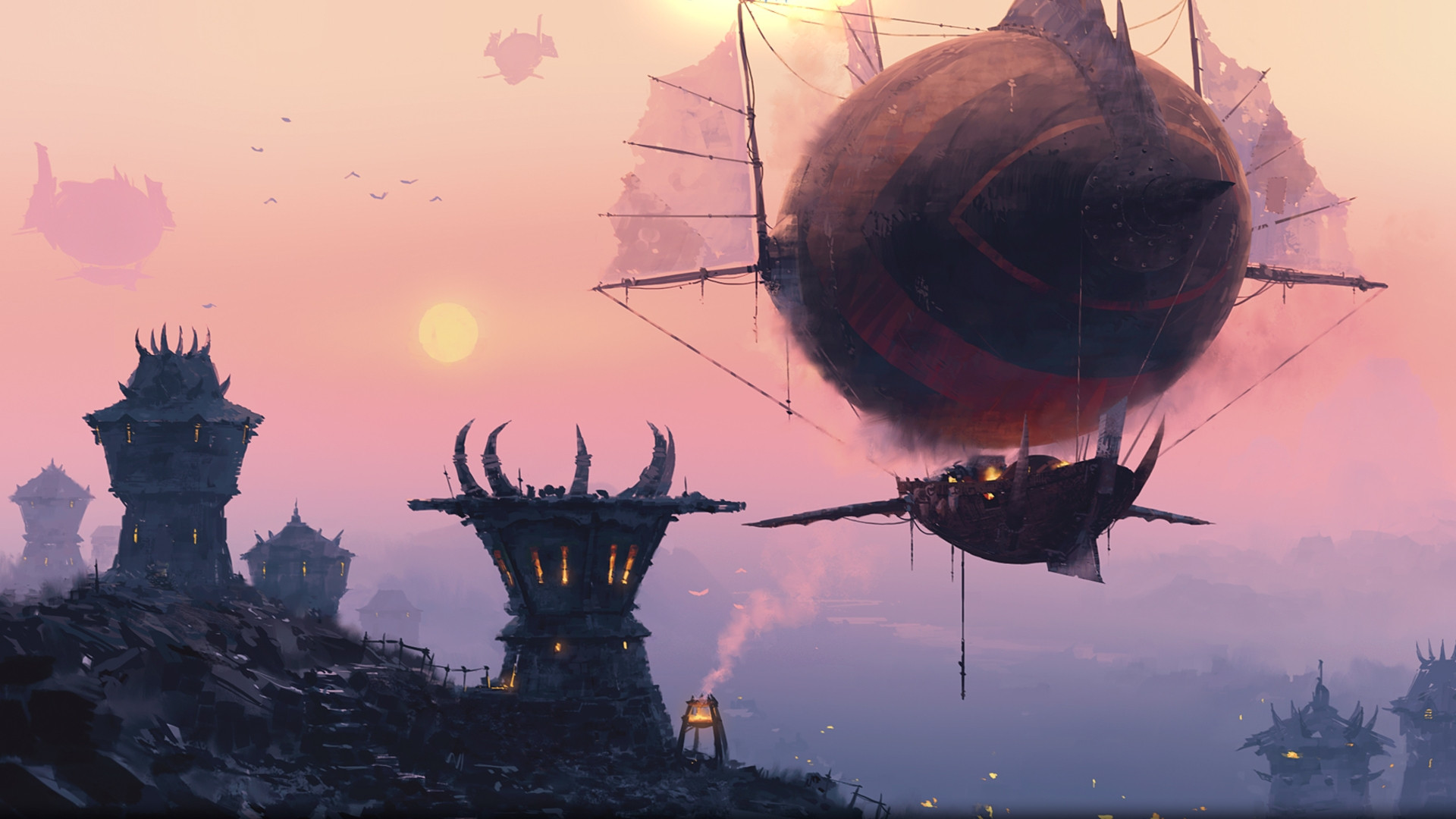

Major Locations
From the cold reaches of Northrend to the hot deserts and swamps of Kalimdor, the following pages will give details on the major continents and locations in the world of Azeroth.
Kalimdor
Kalimdor (Titan and Darnassian for land of eternal starlight) is one of the main continents of Azeroth. It is located to the west of the Eastern Kingdoms, southwest of Northrend and northwest of Pandaria. The Great Sea lies in between the continents. Kalimdor is home to the night elves, orcs, tauren, trolls, and draenei. Other races present include the ogres, centaur, naga, demons, and other, more minor races.
Kalimdor can be further divided into three major regions (western continents) known as North Kalimdor, Central Kalimdor, and South Kalimdor.
Kalimdor was primarily the domain of the night elves in the ten thousand years between the War of the Ancients and the Battle of Mount Hyjal. In the years since the battle, night elf dominion has given way as the tauren adopted a more centralized system and accepted their allies, the orcs and the trolls into their midst. The recent arrival of the draenei adds a new power to the map.
Now, however, the continent is a politically divided one, the Horde have established strong control in the central and eastern areas while the night elves, now aided by the draenei, preserve footholds in northwestern areas.
Geography
Kalimdor has a huge variety of both animal and plant life. Within this continent, you will find almost every land type; from the ice cold plains of Winterspring in the north, to the hot desert of Tanaris in the south. The mystical woods of Ashenvale, the dry, rocky Thousand Needles, the tropical, lush jungle of Feralas — this continent has it all. To the north the landscape is primarily coated in thick alpine woodland, typical in areas such as Ashenvale. Central Kalimdor, home to the horde, is far more rugged and barren, save for the safety of Mulgore. In the south, desert areas dominate the terrain; however, nestled between these bleak landscapes are realms of beauty and wonder such as the thriving tropical regions of Feralas and Un'Goro Crater.
Eastern Kingdoms
The Eastern Kingdoms (occasionally called Azeroth and the Old World) are the eastern continents on the world of Azeroth. The Eastern Kingdoms is made up from a group of smaller continents (Azeroth, Khaz Modan and Lordaeron) formed from the original continent of Kalimdor following the Great Sundering. The Eastern Kingdoms lie to the east of the Great Sea and to the west of the Forbidding Sea. The central part of the Eastern Kingdoms is dominated by the Khaz Mountains and the Redridge Mountains. Both cover several zones. The Eastern Kingdom's western counterpart is the continent of Kalimdor.
The Eastern Kingdoms include the three continents of Lordaeron, Khaz Modan, and Azeroth. After the Shattering, a large expanse of the underwater 'continent' was discovered, known as Vashj'ir. The Eastern Kingdoms are the homes of the undead, dwarves, gnomes, blood elves, humans, worgen, and few remaining high elves.
Geography
The landmass of the Eastern kingdoms is technically split into four different continents-
- Azeroth
- Khaz Modan
- Lordaeron
- Quel'Thalas
The Eastern Kingdoms has a wide variety of wildlife and natural landmarks. From wild bears to the savage murlocs. The Climate of the Eastern Kingdoms is split between temperate and frigid, from the dark forests of Duskwood to the winter tundra of Dun Morogh. The landscape is dotted with several major cities and trade hubs such as stormwind or the Undercity.
Northrend
Northrend is the northern, icy continent of the world of Azeroth, and the source of the evil Scourge. It is also the home of Icecrown Citadel, the seat of the malevolent Lich King. The continent is featured in the World of Warcraft expansion, World of Warcraft: Wrath of the Lich King.
Often called "the roof of the world" and sometimes "the crown of Azeroth", Northrend is a frozen wasteland that lies far to the north. As with the other continents, it was once part of the original Kalimdor landmass that was broken apart during the Sundering. The land that became Northrend drifted far from Azeroth's temperate zone, which killed off a large portion of the remaining wildlife.
Geography
Northrend is a cold and unforgiving continent. The people who live here have to wear layers all year round to defend against the harsh weather. The cold of Northrend has given it its own ecosystem different from that of the other continents. Much of the wildlife found in Northrend can only be found in these icy parts.
Northrend is also home to the Icecrown citadel, which is home to the ruler of the undead and the scourge, the lich king.
Pandaria
Pandaria is the homeland of the pandaren and birthplace of their ancient empire. Located in the southern part of Azeroth, Pandaria was shrouded by a magical mist by its last emperor after the Great Sundering ten thousand years ago, and thus disappeared into myth and legend. Only those pandaren who left their homeland on the back of the great turtle Shen-zin Su, including the renowned pandaren brewmasters, have been seen outside of their homeland since; some even came to the aid of the other races during the Third War.
The mists parted because of the Cataclysm, when tensions between the Alliance and Horde were at their highest. In his lust for power, Warchief Garrosh Hellscream led the Horde to Pandaria's shores to gain its spoils for himself, while High King Varian Wrynn led the Alliance to protect it from Hellscream's mad quest for power. While the locals were initially wary of the outsiders whose presence allowed the sha to awaken in full force, they soon came to see the outisders as allies in the campaigns against the sha, mantid, and the newly revived Thunder King.
Garrosh Hellscream continually attempted to abuse Pandaria's gifts for his own personal power, including the Divine Bell and the Heart of Y'Shaarj. Following his desecration of the Vale of Eternal Blossoms, he and his "True Horde" were defeated during the Siege of Orgrimmar. The spirit of Emperor Shaohao then planted a magical tree in the center of the Vale, providing hope that the damage done to Pandaria will eventually heal. The August Celestials claimed that they will work with the mortals to heal the land.
Geography
The lands of pandaria are those of beauty. The continent has a very warm climate with jungles and forests making up most of the terrain. The lands of pandaria are filled with ancient ruins and massive Shrines. Pandaria is also the only place known to have Cloud Serpants that roam the lands.
Pandaria is lush and contains plentiful resources. The Pandaren are able to live on the continent without relying on trade from the others and they do this as often as the can.
The Great Sea
he Great Sea makes up the deep waters between the continents of Azeroth and it surrounds the Maelstrom. Every single sea in the world connects to it. This stretch of sea is so vast you will die of fatigue before you can swim any significant distance. In order to cross it, the Horde primarily uses zeppelins while the Alliance prefers to use boats.
The Great Sea did not exist prior to the Great Sundering, thus, after the Well of Eternity was destroyed and Kalimdor was split asunder, the waters that filled in the void became known as the Great Sea.
When the Horde ravaged the Kingdom of Stormwind and killed its advocate, King Llane, Anduin Lothar rallied his countrymen and charted their retreat across the Great Sea — and onto the shores of Lordaeron.
Since the war against the Lich King, the Great Sea has become more heavily traveled by both Horde and Alliance. The two have had numerous naval skirmishes.

The Cataclysm caused many changes in the Great Sea, and several new locations became accessible to players: The goblin isle of Kezan and the Lost Isles are located just southwest of The Maelstrom, but are unreachable except during the goblin starting questlines. The Maelstrom itself, damaged by Deathwing, has opened a portal directly to the Elemental Plane of Earth, Deepholm, reachable only to those specially summoned there. The reef of Vashj'ir off the coast of the Eastern Kingdoms became accessible, and the Horde and Alliance are recruiting seasoned soldiers to explore and claim the territory. Off the coast of Gilneas, the island kingdom of Tol Barad is another point of contention between the Horde and Alliance, who are constantly fighting for control. In an unspecified location on the Great Sea lies Darkmoon Island, which hosts the mysterious and slightly sinister Darkmoon Faire on the first week of every month.
The Forbidden Sea
The Forbidding Sea is a largely unexplored and uncharted sea along the eastern coast of the Eastern Kingdoms, sometimes noted by travelers on the coasts of the Hinterlands, Arathi Highlands and Swamp of Sorrows.
The Veiled Sea
The Veiled Sea is the name of the vast sea that lies to the north and west of Kalimdor, mostly noted by travelers on the coasts of Teldrassil, Darkshore, Ashenvale, Desolace, Feralas and Silithus. It is the location of the night elven homeland and the group of islands known as the Azuremyst Isles — where the draenei inter-planar vessel named The Exodar crash-landed.
Giant turtles, sea turtles and krakens are known to live in the Veiled Sea.
Some time after the discovery of Pandaria, a battle between the Wavestrider and the Inevitable occurred away from the coast of Feralas, with the former being destroyed.
The Uncharted Sea
The Uncharted sea is perhaps the most mysterious with the least known about it. These are the waters that lie to the south on Pandaria and very few have traveled theses waters.
The Maelstrom
The Maelstrom is a massive, fierce vortex of water that was created when the Well of Eternity collapsed into itself during the Great Sundering. It is located in the middle of the Great Sea which subsequently filled the void. The water churns constantly in a dizzying storm of tidal and arcane energy that seems to have no end. The Maelstrom also happens to be the final resting place of the destroyer, Deathwing.
Ship and zeppelin routes go out of their way to avoid the Maelstrom, for fairly obvious reasons.
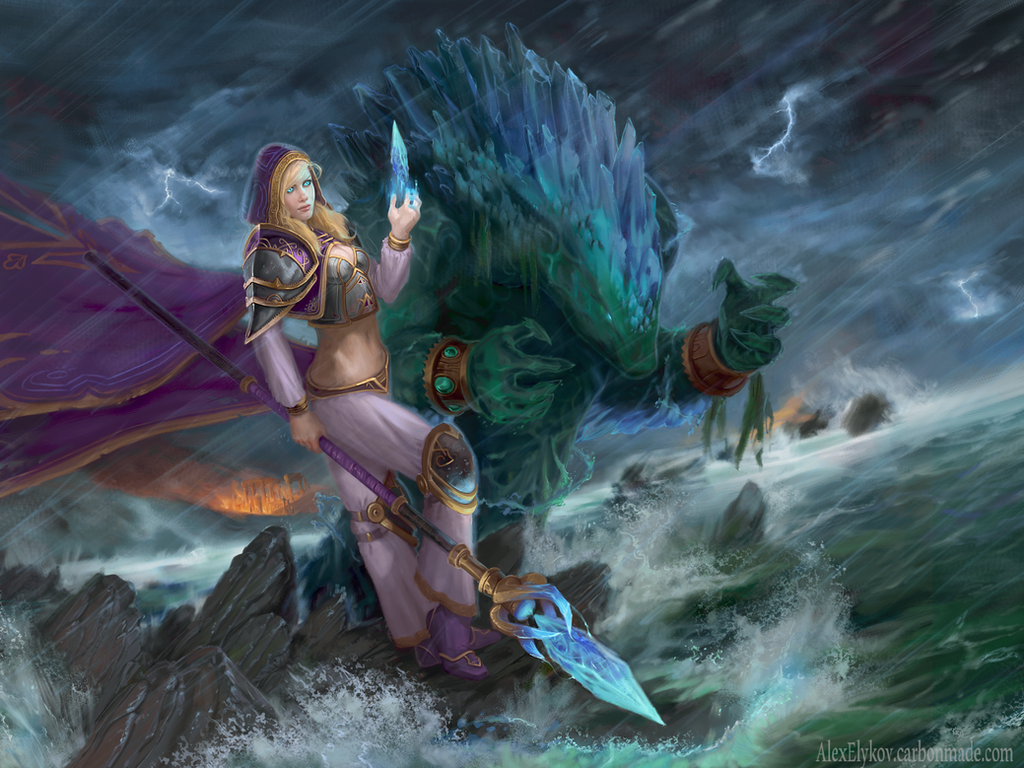

Major Settlements
The World of Azeroth is dotted with many cities and towns. These all vary from small hamlets to a bustling metropolis. This section will discuss in detail the major cities and settlements that inhabit the world of warcraft.
Darnassus
Faction: Alliance
(aka Darnassus City) is the capital city of the night elves of the Alliance. The high priestess, Tyrande Whisperwind and the Archdruid Malfurion Stormrage reside in the Temple of the Moon surrounded by sisters of Elune and Draenei ambassadors.
Atop the massive boughs of the second World Tree, Teldrassil, lies the wondrous city of Darnassus. The elegant bridges, beautiful groves, and leaf-covered pathways that dot the city’s landscape are testaments to the night elves’ reverence for nature. One of Darnassus’s most notable structures is the stunning Temple of the Moon, the center of worship for High Priestess Tyrande Whisperwind and her Sisters of Elune.
Darnassus is home to night elves of all vocations, and the city has recently opened its doors to human refugees from Gilneas as well. Many of these embattled humans have contracted a strange curse that transforms them into feral wolf-beasts known as worgen. Although they’re usually reclusive, the night elves have allowed these outsiders into Darnassus because they know the perils of the Gilneans’ cursed state all too well: it was, in fact, a group of night elf druids that created Azeroth’s first worgen millennia ago. Despite the arrival of these new residents, Darnassus remains a symbol of the night elves’ rich culture and glorious history.


Exodar
Faction: Alliance
The Exodar is the enchanted capital city of the draenei who chose to depart from Draenor. Formerly a dimensional ship satellite structure of the dimensional fortress known as Tempest Keep, it recently crashed on Azeroth. It is located in the westernmost part of Azuremyst Isle. The faction associated with the city, Exodar, is named after the ship itself.
Ironforge
Faction: Alliance
is the capital city of the dwarves, a member of the Alliance. It is the ancestral home of the Bronzebeard dwarves. King Magni Bronzebeard rules his kingdom of Khaz Modan from his throne room within the city, and the High Tinker Gelbin Mekkatorque, leader of the gnomes, has temporarily had to settle down in Tinker Town after the recent fall of the gnome city Gnomeregan.
The city is perhaps the most intricate of the Alliance cities, boasting many small passageways, shops built into the rock walls, great halls and cavernous rooms. The feel of the city is a bustling, rowdy, and somewhat industrial one, however, it is predominantly safe-feeling and cozy; fires roar in the hearths of the inns and shops, the sounds of smithing go on as fires roar in the blacksmithing forges, and much dwarven laughing and frivolity is to be heard. Also, unlike Stormwind and Darnassus, the city is actually a massive cavern carved into the earth by the dwarves; the ceiling and floor are both hard stone. This gives the place a sanctuary-like feel.
Mainly because of the Deeprun Tram, linking Ironforge and Stormwind City, and the district of Tinker Town, Ironforge is one of the most racially diverse cities in the Alliance world. Dwarves predominate, of course, but you will find plenty of gnomes even outside of Tinker Town, and probably as many humans. This is true for player characters as well as non-player characters, since Ironforge is in the heart of the Alliance world. You will find almost no night elves, however, as they have long since set themselves apart from the other races.
The collective frivolity of the place, the bustling and gruff manner of the dwarves, and the fantastic architecture, makes Ironforge a wonder just to visit — whether or not you have business to attend to there. Ironforge also holds the main Alliance Brewfest.
Orgrimmar
Faction: Horde
Orgrimmar is the seat of power for the Horde and the capital city of the orcs, but also has many trolls and other members of the Horde. Found at the northern edge of Durotar, the imposing city is home to the Warchief of the Horde, Vol'Jin. As with all capital cities, it has a bank, class, profession trainers, and an auction house.
Orgrimmar was founded by Thrall after the defeat of the burning legion many years ago. Ogrimmar was also the staging point for the Siege that eventually ended in the capturing of Garrosh Hellscream.
Today, Orgrimmar lies at the base of a mountain between Durotar and Azshara. A warrior city indeed, it is home to countless amounts of orcs, trolls, and tauren. An increasing amount of Forsaken are now joining the city, as well as the blood elves and Goblins who have recently been accepted into the Horde.


Silvermoon City
Faction: Horde
is the capital of the blood elves, located in the northeastern part of the Eversong Woods within the kingdom of Quel'Thalas, at the northernmost tip of the Eastern Kingdoms. The breathtaking capital city of the blood elves may rival the dwarven capital of Ironforge as the world's oldest, still standing, capital.
Rebuilt from the devastating blow dealt by the evil Prince Arthas, the city houses the largest population of blood elves left on Azeroth. Silvermoon presents a very proud and wondrous theme to any who enter. The city is a beacon of culture, with beautiful architecture and statues of elven heritage, and the flag of Quel'Thalas is present all over the city. The Blood Elves are a proud people, and thus cover their city in their colours of red, green, and gold.
Silvermoon today is only the eastern half of the original city; the western half was almost completely destroyed by the Scourge during the Third War. Falconwing Square, the second blood elf town, is the only part of western Silvermoon remaining in blood elf control. The Dead Scar (the path taken by Arthas Menethil and his undead army on the quest to resurrect Kel'Thuzad, which carves through all of Eversong Woods) separates the rebuilt Silvermoon from the ruins of the western half.
Interestingly, the Ruins of Silvermoon house no undead, instead they contain Wretched and malfunctioning Arcane Guardians. As it stands, what remains of Silvermoon City is still bigger than other Horde cities.
Stormwind City
Faction: Alliance
(a.k.a. New Stormwind or simply Stormwind) is located north of Elwynn Forest on the Eastern Kingdom's northwest coast, and is the capital city of the kingdom known as Stormwind and the largest human city of Azeroth. However the city-state also controls or influences other territories, which include Elwynn Forest, Northshire Valley, the Redridge Mountains, Westfall, and Duskwood. The city is named for the occasional sudden squalls created by a ley line pattern in the mountains around the glorious city, and is one of the last great human cities. The city itself has been rebuilt at least once, and is a marvel of human design and engineering. Its guards keep the peace within the city's walls.
Stormwind firmly backs the Alliance, and its knights, priests, paladins, and mages served in the three wars against the Horde. Primarily a human settlement, a fair number of high elves, Ironforge dwarves, and even a few night elves and gnomes dwell here as well. Stormwind City is the home of the Academy of Arcane Sciences, the only remaining school of wizardry in the east, and the Cathedral of Light, the philosophical capital for those who follow the Holy Light. These edifices draw healers, priests, paladins, and mages to the city, all of whom bolster Stormwind’s military. King Varian Wrynn rules from Stormwind Keep. Rumor has it that Wrynn employs a secret society, the Stormwind Assassins, who are spies and saboteurs wielding royal carte blanche.
"Unaffected by the ravages of the Scourge in the north, Stormwind still faces its own threats, both from without and within."
Recent events have led to the return of King Varian Wrynn to his homeland and his rightful throne. In his absence, his son Anduin Wrynn was temporarily crowned king. Due to his young age, Highlord Bolvar Fordragon was made regent until Varian returned home or Anduin came of age. Along with Bolvar's aid, the mysterious Lady Katrana Prestor helped the child king rule the city.
Thunder Bluff
Faction: Horde
is the tauren capital city located in the northern part of the region of Mulgore on the continent of Kalimdor. The entire city is built on bluffs several hundred feet above the surrounding landscape, and is accessible by elevators on the southwestern and northeastern sides.
Thunder Bluff was settled fairly recently by the tauren, who successfully drove out the marauding Centaur from their lands. Thunder Bluff is the first city of its kind; for centuries, the tauren wandered the plains as nomads, unable to claim a permanent home. All Horde visitors are welcome here, and the expertise of the tauren in professions ranging from leatherworking to shamanism, druidism to hunting are all practiced and taught here. Unfortunately, the central location of the Thunder Bluff also makes it easily accessible to members of the Alliance. Thus, it is often one of the easier Horde capitals for Alliance players to raid, with Baine being killed long before Horde reinforcements even become an issue.
In order to gain access to Thunder Bluff, visitors must either ride wyverns to the top one of the four towering mesas, use the zeppelin from Orgrimmar or be lifted via rope and wood elevators, an invention unique to the tauren.
The Undercity
Faction: Horde
is the capital city of the Forsaken undead of the Horde. It is located in Tirisfal Glades, at the northern edge of the Eastern Kingdoms. Far beneath the ruined capital city of Lordaeron, the royal crypts have been turned into a bastion of evil and undeath. Originally intended by Prince Arthas to be the Scourge's seat of power, the budding "Undercity" was abandoned when Arthas was recalled to aid the Lich King in distant Northrend. In Arthas's absence, the Dark Lady, Sylvanas Windrunner, led the rebel Forsaken to the Undercity, and claimed it for her own. Since taking up residence, the Forsaken have worked to complete the Undercity's construction by dredging the twisted maze of catacombs, tombs, and dungeons that Arthas began.
Dalaran
Faction: Kirin'Tor / None
(aka Dalaran City) is a magocratic city-state which was once located by the Lordamere Lake on the Alterac Mountains shore in the Eastern Kingdoms. With the beginning of the War against the Lich King its leaders, the Kirin Tor, have used their powers to move the city over the Crystalsong Forest in Northrend in order to use it as a front to attack the armies of the Lich King.
The Kirin Tor rule the single city.[1] (ToD 73) Its inner fortress, the Violet Citadel, has served as the focal point for magi and the study of the arcane throughout human history. The kingdom's national color is violet and its flag is a yellow, possibly golden, eye set against a light purple background.
Shattrath City
Faction: Naaru / None
(aka Shrattrath), or the City of Light, is a major hub in Outland situated in the northwestern portion of Terokkar Forest. It is a capital-sized sanctuary city populated by ancient heroes and naaru. It is the first capital available to both sides.
Shattrath was once the largest Draenei city in Draenor, until a savage siege at the hands of the recently corrupted Orcs utterly destroyed it. Maraad is still traumatized by the atrocities that happened there.
Shattrath's ruins are maintained by the naaru known as the Sha'tar, who are centered at the Terrace of Light. Their ruler is A'dal. The lower city is flooded with refugees of all sorts from the various conflicts of Outland; naaru, draenei, blood elves, humans, orcs, high elves, dwarves, sporelings, ogres, arakkoa, goblins, ethereals, Mag'har orcs, Forsaken, trolls, gnomes, night elves, mo'arg, Broken draenei, and draenei Lost Ones can all be found in varying quantities within Shattrath. Shattrath used to have portals to all Azerothian capitals like Darnassus and Thunder Bluff, but they have disappeared in the wake of the Shattering (with the exception of the portals to Orgrimmar and Stormwind).
A player character can ally with either the Aldor or the Scryers. The Aldor are an ancient draenei priesthood working with the Sha'tar to battle the Burning Legion. The Scryers are a group of blood elves that broke away from Prince Kael'thas, and offered to assist the naaru of Shattrath. While both factions strive for a common goal, they find themselves at odds with each other for control of the city, and the naaru's favor.




Chapter 4: Important People
There are many major players in the world of Azeroth but very few stand out like the ones detailed in the following pages. The people described below have altered events that have, in the end change the course of the world and its inhabitants.
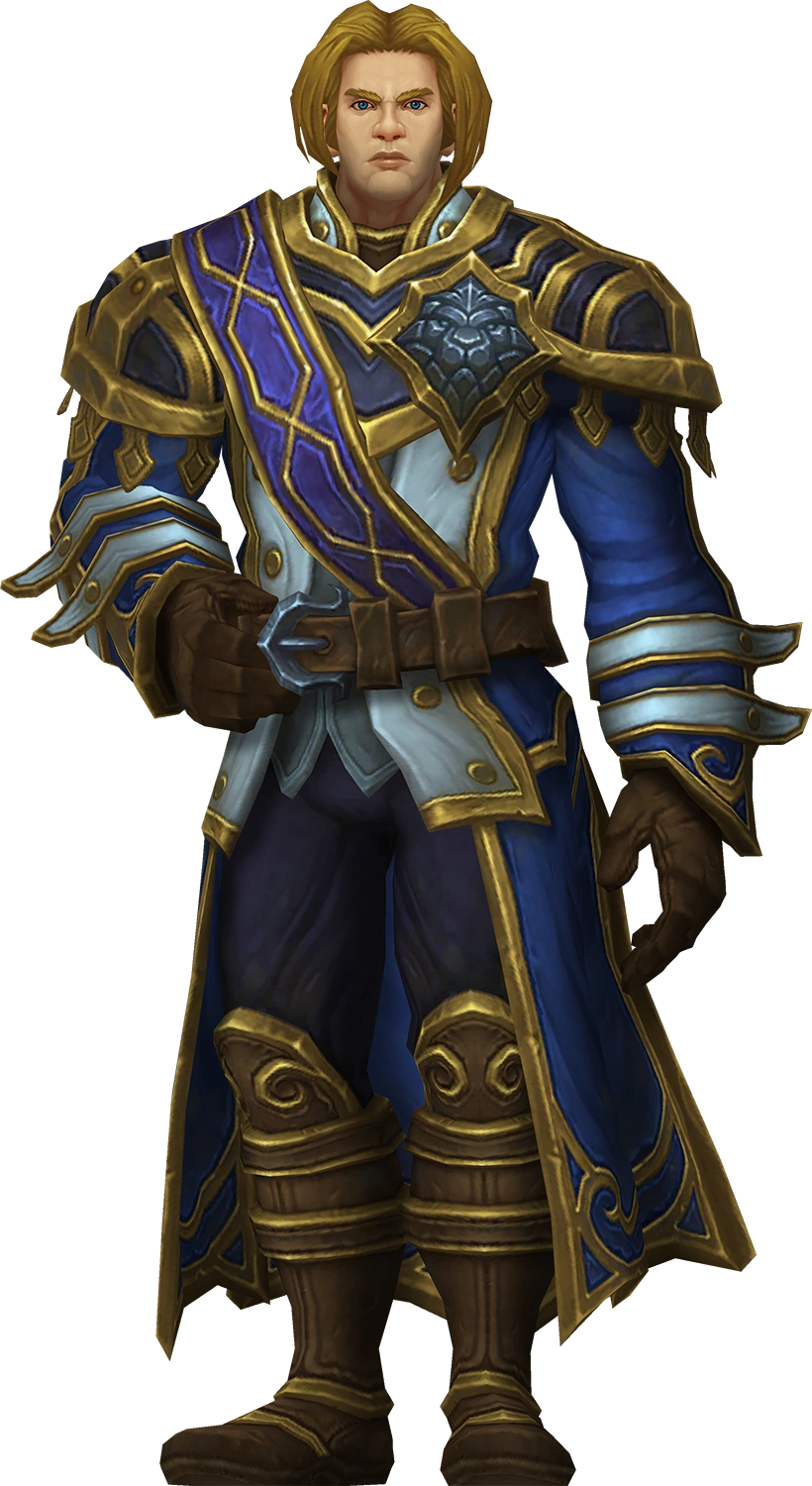
Anduin Wrynn
Anduin Llane Wrynn is the son of the current king of Stormwind and legendary human hero Varian Wrynn. Conquering doubts and insults laid against him in his youth, Anduin has become a symbol of Stormwind in the style of his father. Inspired by the ideals of the Orc Thrall and his father's campaigns throughout Azeroth, as well as the immense suffering inflicted by the campaign of Deathwing and the philosophy of Pandaria due to his prolonged stay there as a part of the Alliance-Horde war, Anduin has strongly pursued an agenda of peace and urged his father to do the same.
He is named after two venerated figures of Stormwind history: the legendary Anduin Lothar and his grandfather, King Llane.
Biography
The son of King Varian Wrynn, ten-year-old Anduin was given the crown to maintain order when Varian disappeared en route to a diplomatic conference at Theramore Isle; however, real power resided in the hands of Highlord Bolvar Fordragon, the Regent of Stormwind, and Lady Katrana Prestor, the Royal Advisor.
King Varian's disappearance was a closely-kept secret, and his sudden "return" (later proven to be an impostor) was treated with skepticism by both Anduin himself and other leaders, such as King Magni of Ironforge. He was also captured by Onyxia because he was seen as a threat to her plan to overthrow Varian. He was freed by Valeera Sanguinar and Broll Bearmantle with an army of Stormwind Knights including his father, Varian Wrynn.
They slew Onyxia, and Anduin's father regained his former self. Eversince Anduin has been aiding his father in the pursuit of peace and after the events of Pandaria and the trial of Garrosh, Anduin has hope for his fathers future.
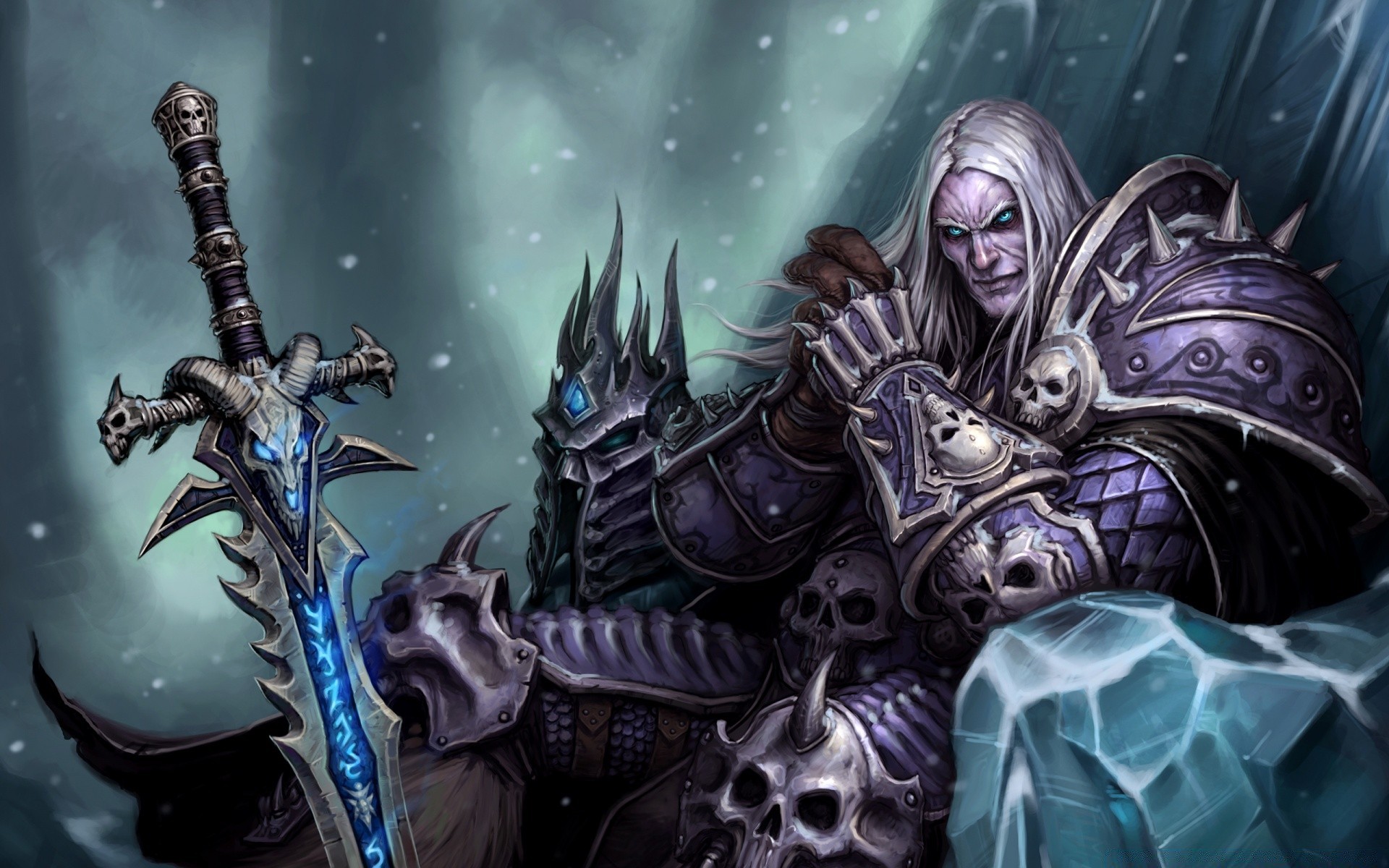


Arthas Menethil
Arthas Menethil, Crown Prince of Lordaeron and Knight of the Silver Hand, was the son of King Terenas Menethil II and heir to the kingdom's throne. He was trained as a paladin by Uther the Lightbringer and became inducted into the Knights of the Silver Hand. Arthas also had a romantic relationship with the sorceress Jaina Proudmoore. Committed to the protection of his people, Arthas was determined to stop the plague of undeath from infecting Lordaeron.
Despite his promising beginnings, Arthas became one of the most dark and powerful beings Azeroth would ever know. Although he killed the necromancer Kel'Thuzad, he was unable to stop the plague's spread and resorted to increasingly desperate methods, such as purging the city of Stratholme from its infected. Taking up the cursed runeblade called Frostmourne, Arthas was finally able to defeat the undead leader Mal'Ganis, but in so doing he lost his soul. Becoming a death knight of the Scourge, he led the undead forces in destroying Lordaeron, Quel'Thalas and Dalaran. Arthas afterwards made his way to the Frozen Throne of Icecrown, and merged with the Lich King.
Ruling as the dominant personality of the Lich King for years, Arthas was defeated in combat by adventurers of the Alliance and the Horde. Cradled by the spirit of his father, King Terenas, Arthas Menethil died, leaving the mantle of the Lich King to be taken by a noble soul who would forever more keep the Scourge at bay.
Death of a King
His ultimate plan nearly succeeded when a group of adventurers led by Tirion Fordring finally ascended to the Frozen Throne and did battle with him after Horde, Alliance and Ashen Verdict forces assaulted Icecrown Citadel. The Lich King froze Tirion in a block of ice, and in the middle of the battle, he suddenly killed the adventurers in a single mighty blow.
Ultimately, the Lich King's plans were foiled when just as he was about to raise the would-be heroes into undeath, Tirion called upon the Light and freed himself from the ice, shattering Frostmourne with the Ashbringer, releasing all of the souls inside including Arthas's soul. The Lich King was severely weakened, and Terenas resurrected the adventurers who defeated him alongside Tirion. After striking a mortal blow against the Lich King, the Helm of Domination was knocked off of Arthas's head as he reached for it in desperation before collapsing on the ground.
As he lay dying, the spirit of his father appeared before him as the glow brought on by his fusion with Ner'zhul faded from his eyes. With his soul freed and his connection with the Lich King severed, Arthas was returned to his former self, albeit in his dying moments. Arthas asked his father if it was over, to which Terenas placed a comforting hand over Arthas's and replied "At long last no king rules forever, my son." Arthas said that he saw only darkness before him, with his eyes rolling back and his hand falling lifelessly to the ground - ending the life of Arthas Menethil once and for all.
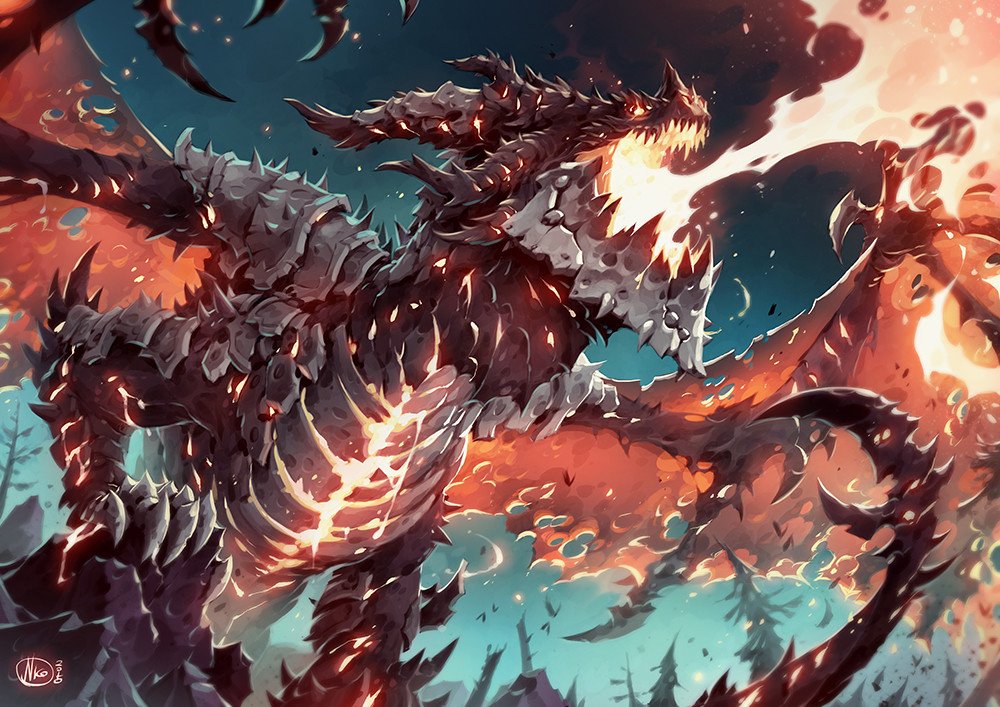

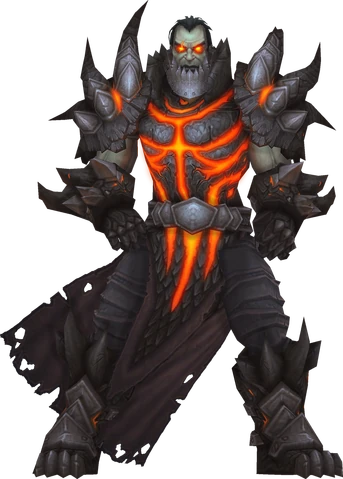
Deathwing the Destroyer
Deathwing the Destroyer, formerly known as Neltharion the Earth-Warder (pronounced "nehl-THAW-ree-uhn"), was one of the five Dragon Aspects and leader of the black dragonflight. Ages ago, Neltharion was empowered by the Pantheon with dominion over the earth and the deep places of Azeroth. However, driven mad by the Old Gods, he turned against the other Aspects during the War of the Ancients, eventually abandoning his title of Aspect of Earth in favor of being the Aspect of Death. Becoming one of the greatest terrors of the known world, his name too became one whispered with a feeling of fear and contempt among both mortals and dragons. He was perhaps the most powerful servant of the Old Gods.
The black Aspect involved himself in the Second War, adopting the form of the human Lord Daval Prestor in order to destroy the Alliance from within. As a human, Prestor was said to be tall, with a slim figure, black hair and clean-shaven hawklike features that were the subject of gossip among the ladies of King Terenas' court. He also had a quick mind and a friendly, engaging manner that endeared him to all involved in the Alterac crisis. It was said that he even got a smile out of Genn Greymane, the normally dour king of Gilneas.
Deathwing also managed to turn his greatest enemy, Alexstrasza, into a slave of the Horde, with which he later allied himself. After a series of setbacks culminating in his defeat at the hands of the other Aspects, Deathwing retreated to Deepholm in the Elemental Plane to recuperate. From there, he observed his former mate Sintharia's experiments with the twilight dragonflight in Grim Batol, and later continued his late consort's work.
The Hour of Twilight
Though believed dead by many, Deathwing returned in spectacular fashion after the fall of the Lich King. Entering Azeroth through Deepholm fractured the World Pillar, causing the Elemental Plane to start collapsing onto Azeroth.
This Cataclysm reshaped the entire world of Azeroth and unleashed widespread destruction. As the world reeled, he appeared and brought flame to various regions of Azeroth. His ultimate goal was to bring about the Hour of Twilight - the liberation of the Old Gods and the end of all life on the planet. Deathwing was aided by powerful allies also minions of his masters, such as the warped ogre-mage Cho'gall and his Twilight's Hammer cult, the powerful Elemental Lords Al'Akir and Ragnaros, and the Neferset tol'vir of Uldum.
Deathwing made his final stand shortly after the cataclysm in the raging torrent of the Maelstrom, when he was at last destroyed by the combined powers of the Aspects and the Dragon Soul as well adventurers of the Alliance and Horde.


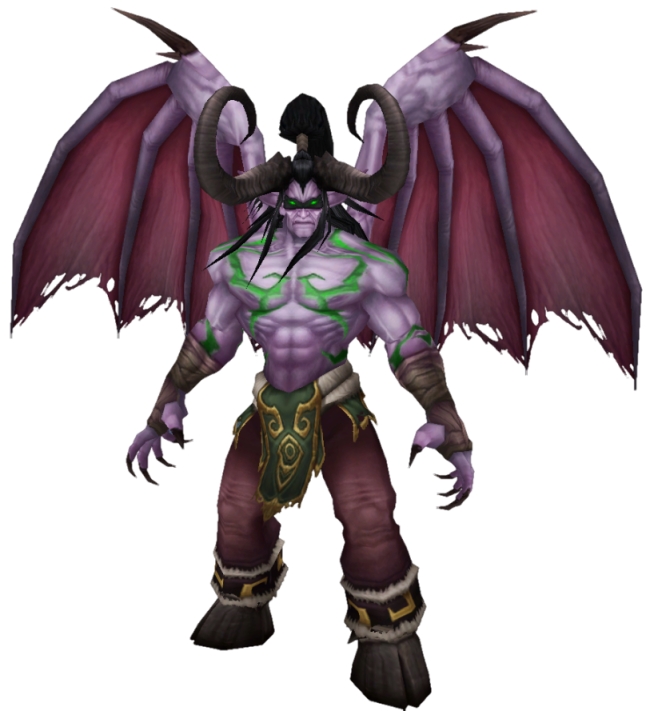
Illidan Stormrage
Illidan Stormrage is the first of the demon hunters, the former self-proclaimed Lord of Outland, former ruler of the Black Temple, and the original leader of the Illidari. He is the twin brother of Malfurion Stormrage and was, like his sibling, in love with Tyrande Whisperwind. Though born a night elf and renowned as a powerful sorcerer, Illidan officially betrayed his people as he temporarily sided with the demonic Burning Legion during the War of the Ancients, though his reasons for doing so were noble as he secretly aimed to repel the Legion's invasion. Due to this betrayal, as well as having secretly created a second Well of Eternity after the first one was destroyed at the end of the war, he was dubbed "the Betrayer" and imprisoned in the Barrow Deeps below Mount Hyjal. There, Illidan remained for over 10,000 years, watched over by the warden Maiev Shadowsong and her Watchers.
During the Third War and the Legion's second invasion of Azeroth, Illidan was freed from his prison by Tyrande, who believed that he would be a valuable ally in the conflict. However, before battling the dreadlord Tichondrius, Illidan consumed the fel energies of the Skull of Gul'dan, and became a demon.
He was therefore banished by Malfurion, despite having succeeded in defeating a high-ranking member of the Legion. After the demons were defeated at the end of the war, Illidan was approached by the demon lord Kil'jaeden, who ordered the Betrayer to destroy Kil'jaeden's traitorous creation, the Lich King.
Into the Outlands
Amassing an army of servants in the form of the naga led by Lady Vashj, Illidan attempted to use the artifact known as the Eye of Sargeras to destroy the Lich King's stronghold of Icecrown, but was hindered by Malfurion, Tyrande and Maiev. Upon hearing that Tyrande was under attack by the undead Scourge, the demon hunter abruptly abandoned his mission and instead temporarily joined forces with his brother in order to save the woman they both loved. Knowing that this would earn the ire of Kil'jaeden, Illidan thereafter fled with his naga to the shattered realm of Outland, where he was later joined by new allies: the blood elves led by Kael'thas Sunstrider and the Broken draenei led by Akama.
Despite succeeding in destroying the Legion stronghold of Nathreza, the Betrayer was ultimately cornered and struck down within his own sanctum by Akama, a group of adventurers of Azeroth and his vengeful former jailer, Maiev. However, even in death, Illidan's story was not yet complete: after the fateful confrontation, Maiev secretly brought the demon's corpse to the Vault of the Wardens so that his spirit could suffer the rest of his eternal sentence.


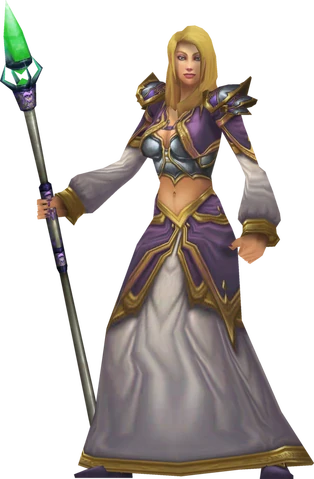
Lady Jaina Proudmoore
Lady Jaina Proudmoore is the daughter of Daelin and Katherine Proudmoore, and sister of Derek and Tandred. She is considered one of the finest mages in all Azeroth and the most powerful human sorceress alive. She is the Lord Admiral of Kul Tiras, the former leader of the Kirin Tor of Dalaran, and of the port-city of Theramore.
Trained as the personal agent of Archmage Antonidas, the late leader of the Kirin Tor and Dalaran, she was sent to investigate the plague of undeath with Prince Arthas Menethil, her childhood friend and one-time romantic interest. She witnessed the first stages of the fall of Lordaeron during the Third War firsthand and, guided by a mysterious prophet later revealed as Medivh, Jaina rallied what survivors she could find and fled across the sea to Kalimdor.
There, her expedition forces joined together with the night elves and the New Horde and defeated the Burning Legion during the Battle of Mount Hyjal. The human survivors then founded the port city of Theramore, joining the Alliance led by Varian Wrynn, while maintaining peace with the Horde.
After the Cataclysm
Shortly after the fall of Deathwing, the Horde led by Garrosh Hellscream destroyed Theramore. Jaina managed to escape with her life, but the experience transformed her, making her more bellicose and even altering her appearance. Following the death of Rhonin during the attack, and fulfilling a prophecy made by the dragon-mage Korialstrasz, Jaina took the fallen mage's place as leader of the Kirin Tor and head of the Council of Six. In spite of personal tragedies, she attempted to maintain the Kirin Tor's neutrality during the Alliance-Horde war. After the Horde-aligned Sunreavers aided Garrosh to steal the Divine Bell, Jaina exiled the Sunreavers from her city during the Purge of Dalaran and aligned the Kirin Tor with the Alliance. Following the Battle for the Broken Shore, the Council decided unanimously to re-admit the Horde into Dalaran for the greater good. Furious, Jaina left the Kirin Tor.
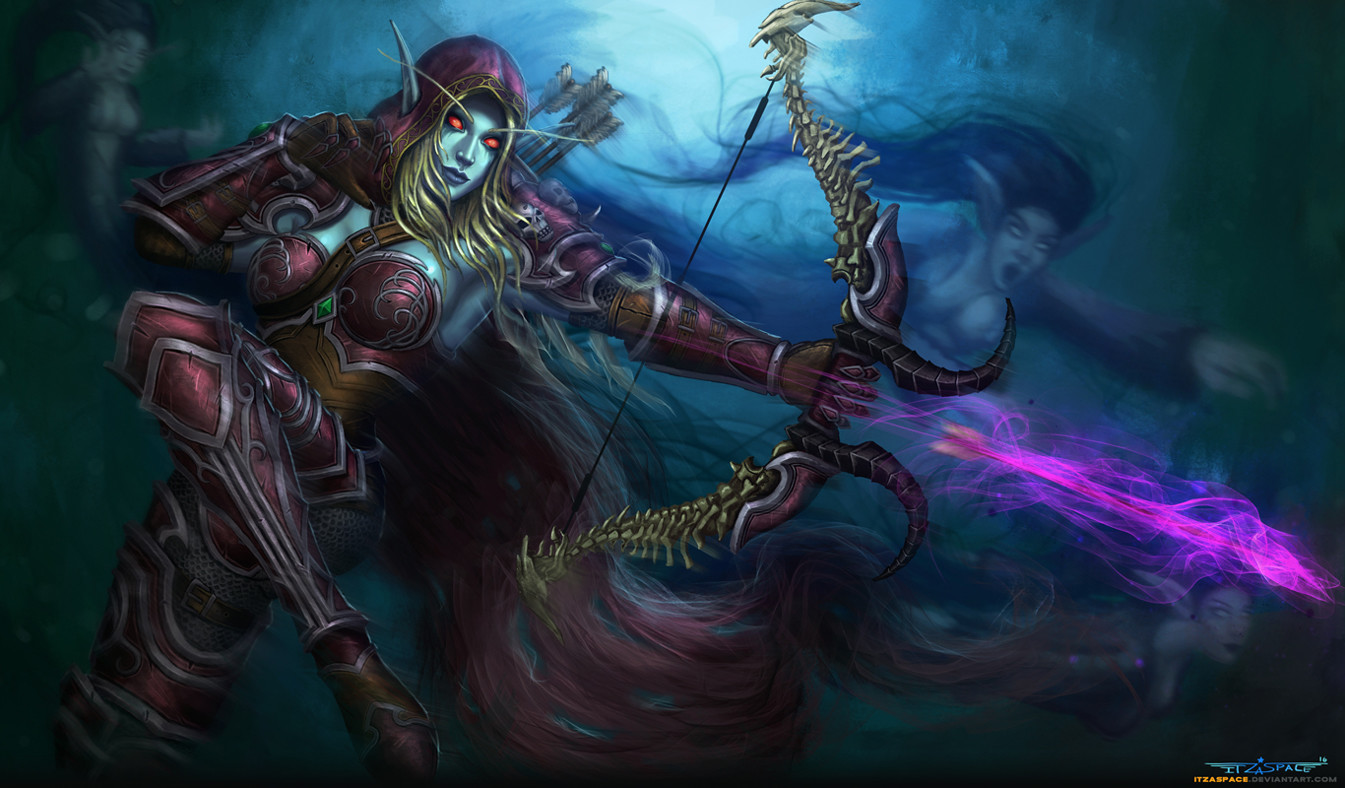


Lady Sylvanas Windrunner
Lady Sylvanas Windrunner, also referred to as "the Dark Lady" and "the Banshee Queen", is the Warchief of the Horde and supreme ruler of the Forsaken, one of the most powerful factions of undead on Azeroth. In life, Sylvanas was the ranger-general of Silvermoon, whose leadership acumen and martial prowess were without equal. During the Third War, she bravely defended Quel'Thalas from a Scourge invasion led by the death knight Arthas Menethil. Ultimately, however, Sylvanas fell in battle. Rather than honor the ranger-general with a quick death, Arthas ripped out her soul and transformed it into a banshee: a cunning and vengeful agent of the Lich King empowered by hate.
When the Lich King's control over his minions weakened, Sylvanas broke away from her tyrannical master's control and reclaimed her body. Vowing to avenge her death, Sylvanas gathered other renegade undead and set out to wage war against the Scourge. Thus it was that the Forsaken came to be, with Sylvanas as their queen. Under Sylvanas' command, the Forsaken joined the Horde and later helped bring about the Lich King's fall in the frozen wastes of Northrend. She seeks a higher purpose for a people who have already died once.
Yet many challenges still lay ahead for Sylvanas. After an uprising within her ranks that killed other members of the Horde, the banshee queen is now mistrusted by many of her allies. Most recently, Sylvanas began fortifying her territory within the Tirisfal Glades in order to establish a proper kingdom for her followers. While Sylvanas maintains that her loyalty to the Horde is undiminished, some of the faction's members are uncertain about her true intentions.
a life of death
After the fall of the Lich King, Sylvanas came to the shocking realization that she, like Arthas before her, was damned to an eternity of darkness and torture in the afterlife. After entering into a pact with the val'kyr, Sylvanas was able to regain her place in the realm of the living for as long as her Val'kyr survive. Knowing the dark fate that will inevitably befall her, Sylvanas considers her people a bulwark against the horrifying darkness that awaits her in the end. Following this, Sylvanas has launched an aggressive attack into the regions of Lordaeron and the greater Eastern Kingdoms not directly under her control, in an attempt to conquer the continent and secure it for the Forsaken.


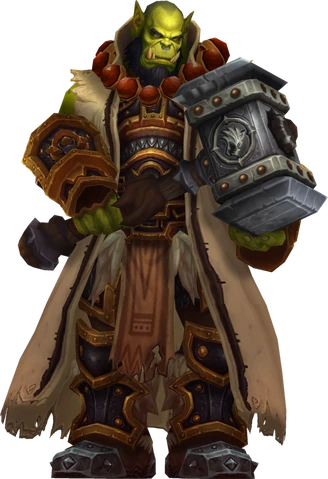
Thrall son of Durotan
Thrall (birthname Go'el), son of Durotan and Draka, is the former Warchief of the restored shamanistic Horde, founder of the nation of Durotar in Kalimdor and one of the second wave of shaman. His parents killed by Gul'dan's assassins shortly after his birth in the beginning of the First War, he was found and raised by Aedelas Blackmoore who gave Thrall his name. Raised as a slave and gladiator, he later joined Orgrim Doomhammer in freeing the orcs imprisoned after the Second War, being named Warchief after Doomhammer's death. After leading the Horde away from the Alliance-claimed Eastern Kingdoms, he rescued and made allies of the Darkspear trolls and Bloodhoof tauren. Thrall led the new Horde against their former demonic masters in the Battle of Mount Hyjal. He subsequently led diplomatic efforts at peace between the Horde and Alliance after the end of the Third War.
After the fall of the Lich King and the increasing elemental unrest heralding the Cataclysm, Thrall stepped down as leader of the Horde, appointed Garrosh Hellscream as Warchief, and joined with the shamanistic Earthen Ring to combat the rampaging elements, eventually aiding the Aspects in Deathwing's downfall.
With his victory over the corrupted aspect behind him, Thrall had been forced to deal with the chaos his replacement had sown in his wake. The Pandaria Campaign clearly demonstrated Garrosh's unforeseeable madness and pride, leading to dissension within the Horde itself. Thrall stepped back in to defend the Horde and its allies from their increasingly ruthless dictator. Together with Vol'jin and the other disenfranchised leaders of the Horde, Thrall overthrew his ill-fated successor in the Siege of Orgrimmar. After Garrosh's capture, Thrall personally chose Vol'jin to hold the Horde together and pledged his allegiance to him, along with the remaining leaders of the faction. His mate Aggra also gave birth to a son named Durak.
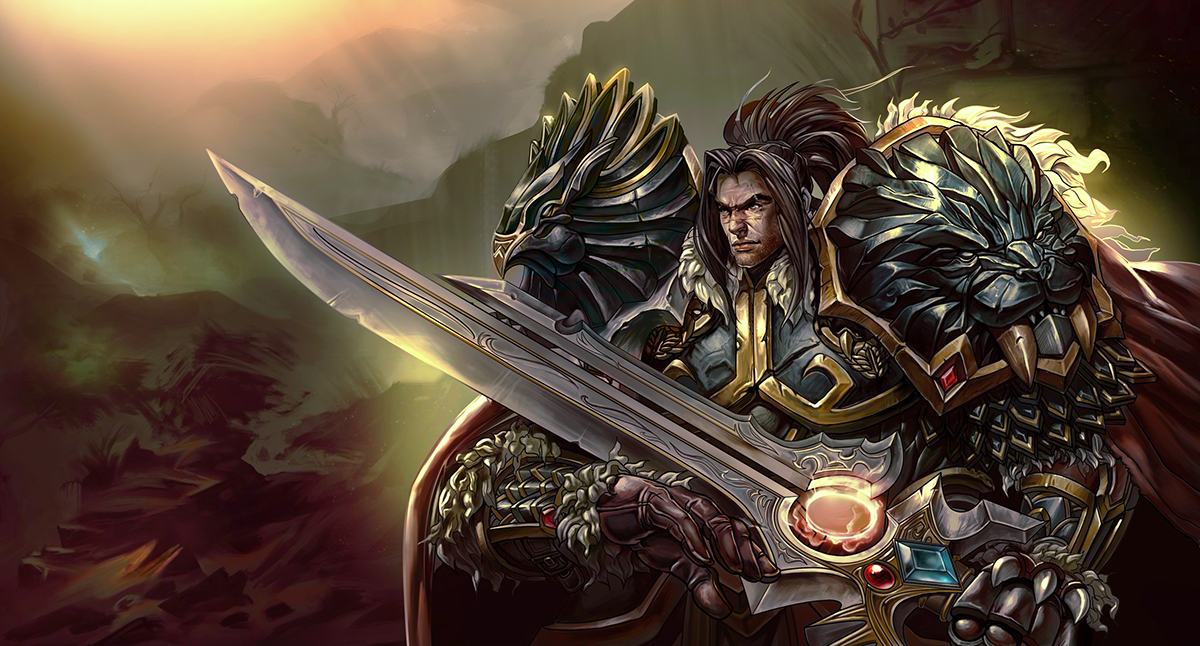

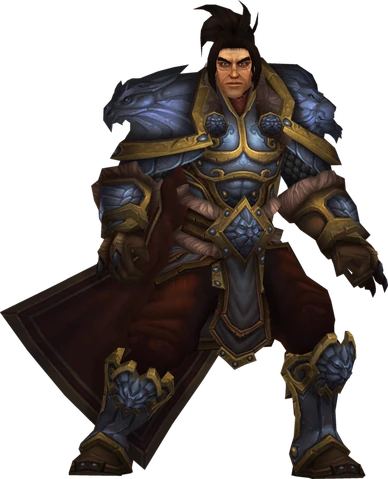
Varian Wrynn
Varian Wrynn was the former King of Stormwind and former High King of the Grand Alliance. During the First War when Varian was a young boy, his father King Llane was murdered and Stormwind was sacked by the Orcish Horde. His guardian and regent Anduin Lothar gathered the survivors and sailed to Lordaeron, where the Alliance of Lordaeron was formed. The Alliance defeated the Horde in the Second War and Stormwind was reclaimed, though at the cost of Lothar's life. Varian was crowned King of Stormwind and stood by King Terenas of Lordaeron as the Alliance began to fracture, but soon faced many internal problems. He was unable to reach a settlement between the Stonemasons who rebuilt Stormwind and the House of Nobles, which led to a riot in which his wife Queen Tiffin was killed. While on a diplomatic mission to Theramore, Varian was abducted by the Defias Brotherhood, formerly the Stonemasons, and went missing. He had managed to escape from the Defias but was suffering from memory loss and soon after enslaved by the Horde and became a gladiator in the Crimson Ring, teamed with Broll Bearmantle and Valeera Sanguinar.
The trio won the Crimson Ring tournament in Dire Maul, for which Varian was given the Taur-ahe moniker "Lo'Gosh" — meaning "Ghost Wolf". After escaping his slavers, Varian discovered he was the missing King of Stormwind and his advisor Lady Katrana Prestor was revealed to be the black dragonflight broodmother Onyxia in disguise, who had manipulated the Defias and Nobles dispute, was behind Varian's kidnapping, and created a duplicate of him using dark magic. With the help of his comrades, he was able to recover his true identity and finally defeat Onyxia.
Under his daring leadership, the humans of Stormwind led the Alliance to victory against the Lich King in Northrend. After the death of Highlord Bolvar Fordragon and Alliance forces at the Wrathgate, Varian declared war on the Horde and sought to bolster their strategic holdings against their perennial enemy. Known for his tenacity and fierce will, King Varian Wrynn was committed to protecting the Alliance's interests and raising his son Anduin to follow in his place. He has been referred to as scion of the wolf Ancient. With the world plunged into chaos by the great Cataclysm, he earned the respect of the night elves, dwarves, and other Alliance races and took up military leadership of the Alliance as High King, vowing to forge a new destiny for Azeroth. The war with the Horde was finally brought to an end following the victory in the Siege of Orgrimmar.
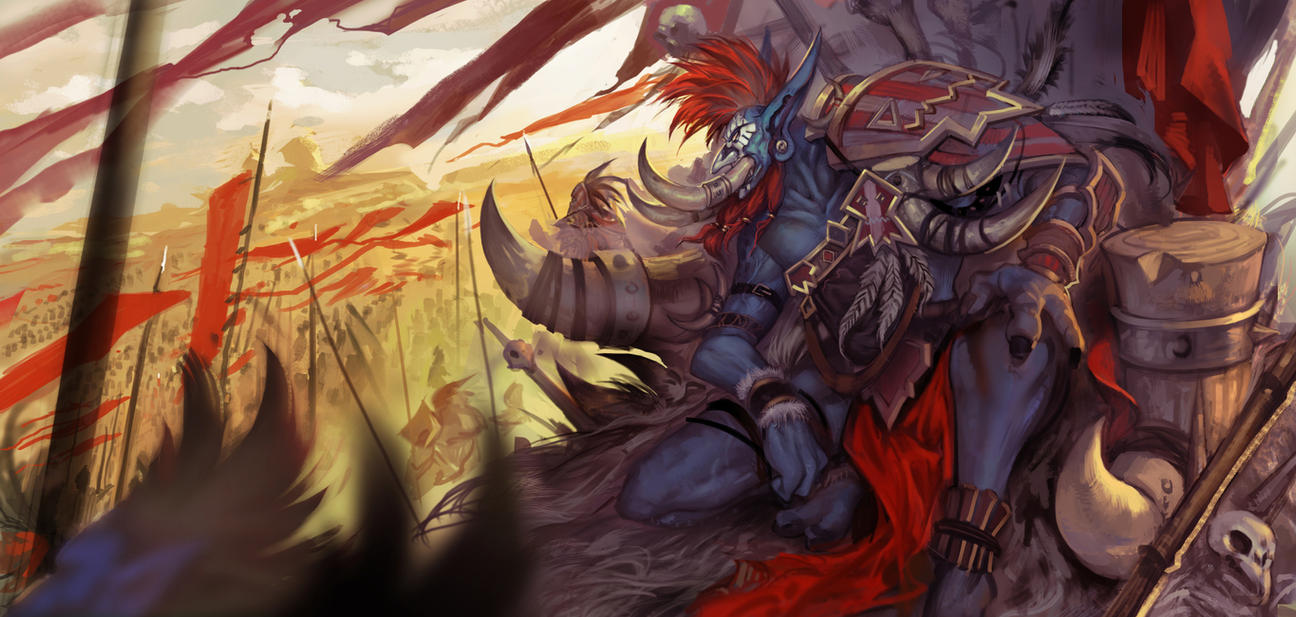

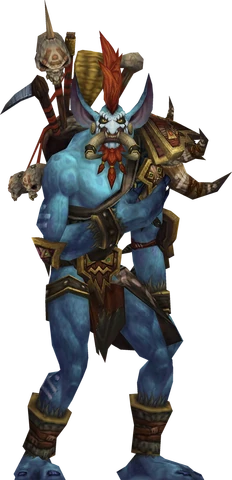
Vol'jin the Shadow Hunter
The shadow hunter Vol'jin (called Vol'jian by the Shado-pan), son of Sen'jin, was the Warchief of the Horde, as well as Chieftain of the Darkspear tribe and rightful ruler of Durotar and the Echo Isles.
Vol'jin had sworn to do everything in his power to lead the Darkspear tribe just as his late father, Sen'jin, would have. For years Vol'jin resided in Orgrimmar, offering strategic advice to then-Warchief Thrall and assisting with critical operations such as retaking the Undercity after the Forsaken bastion had been usurped by Grand Apothecary Putress and the dreadlord Varimathras. During the Cataclysm, however, Vol'jin came into conflict with the Horde's new warchief, Garrosh Hellscream. Alienated by the orc's extremism and lust for war, the troll leader departed Orgrimmar and took up residence on Darkspear Isle. Despite his conflict with the new warchief, Vol'jin remained loyal to the Horde and opposed the efforts of the Zandalari to create a new troll empire in the wake of the Cataclysm.
By the time the war between the Alliance and Horde came to the shores of Pandaria, Vol'jin had become a bitter enemy of Garrosh. After surviving an assassination attempt by one of Hellscream's Kor'kron, Vol'jin went into hiding, while rallying support within the Horde itself to end Garrosh's reign. With Garrosh's defeat and capture, Vol'jin was led to assume the mantle of Warchief of the Horde, with the personal encouragement of Thrall as well as the rest of the Horde's leadership, becoming the first non-orc to earn the title.
joining the horde
While they were in the First Home, for what they thought a week, ended up being three months, the Darkspear tribe was nearly wiped out by a human invasion of the Alliance, as well as constant murloc raids. Only through the timely intervention of Thrall and the orcs did any trolls survive. However, eventually the murlocs succeeded in capturing the trolls, orcs and humans to their underground home. Thrall was able to break free and save many of the imprisoned orcs and trolls and made their way out. As they approached the exit, Sen'jin died bravely in order to save his people and new allies. With Sen'jin's death, Vol'jin became chief shadow hunter for the tribe. In order to repay Thrall for saving his people, Vol'jin pledged his loyalty and service to the Horde.
PART 2
Magic Items
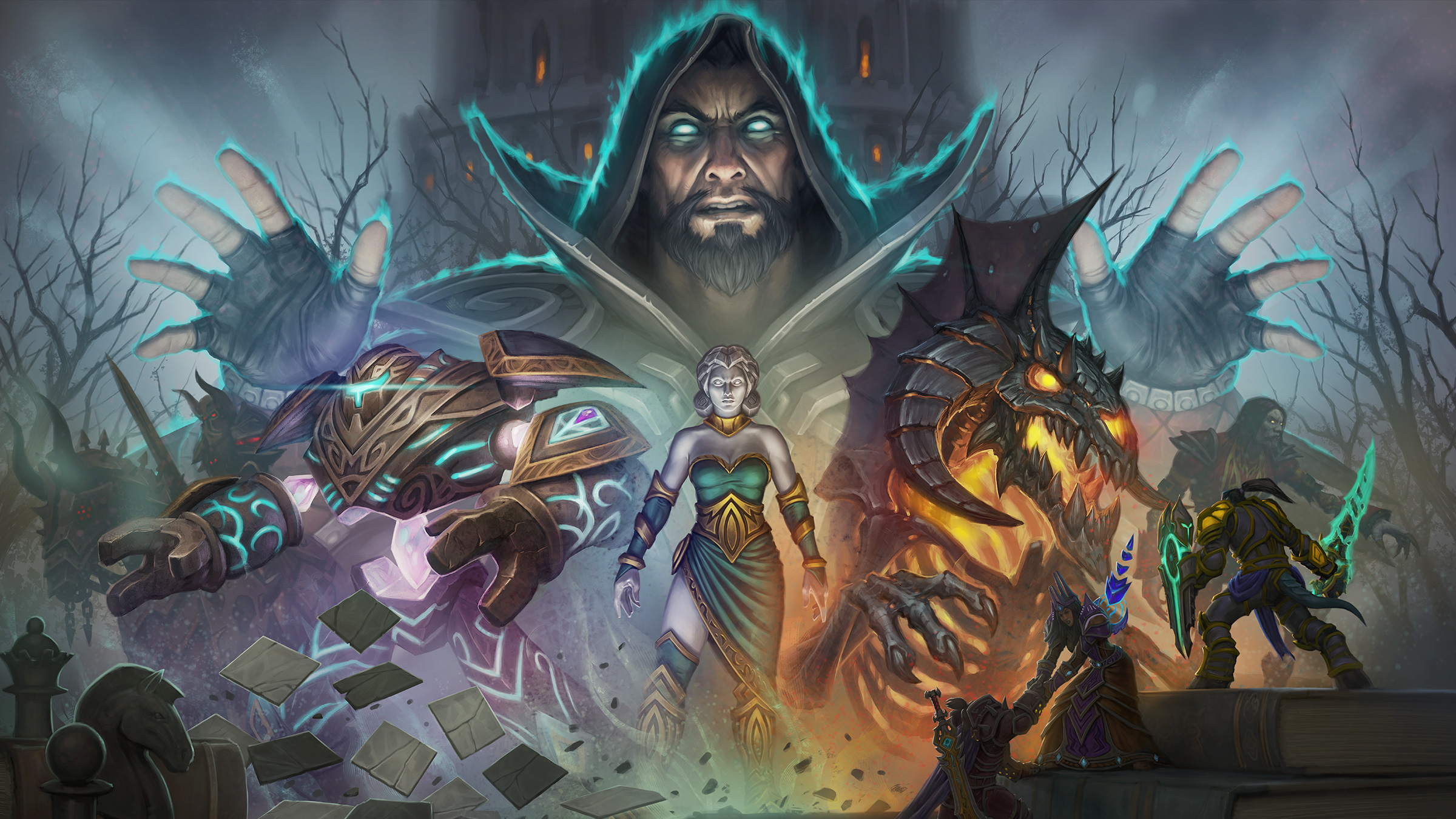
Chapter 5: New Magic Items
In the world of Azeroth there exists many magical items that posses powerful spells and benefits. The Magic items presented in this book are known as "soulbound". These items have binded to the soul of your character and therefor cannot be sold or traded, only destroyed.
Magic Weapons
Annihilator
Weapon (battleaxe), rare
You gain a +1 bonus to attack and damage rolls made with this magic weapon. Whenever this wicked-looking, dark purple battleaxe deals damage to a creature benefitting from an armor bonus to AC, it reduces their bonus to AC by 1 point. The penalty to armor remains for until the target creature has a short rest.
Arcanite Reaper
Weapon (greataxe), rare
This axe is made out of arcanite, one of the hardest substances in existence (AC 23, immune to nonmagical weapon damage, and has 30 hit points), and deals double damage to objects.
Black Grasp of the Destroyer
Wondrous item, uncommon
This heavy steel gauntlet has runes carved into the knuckles and the back of the hand. With a touch, this allows the user to cast dispel magic (as the 3rd-level spell). This property can't be used again until the next dawn.
Blight
Weapon (glaive), rare
You gain a +1 bonus to attack and damage rolls made with this magic weapon. Upon a successful attack against a creature, you may declare that the weapons’ blight ability activates as a bonus action. If blight takes place, the target
must succeed against a Stamina saving throw of 15 or be subject to a random disease (as the contagion spell). This property can't be used again until the next dawn.
Brainsplinter
Weapon (dagger), very rare (requires attunement)
You gain a +2 bonus to attack and damage rolls made with this magic weapon. When striking a spellcaster, the dagger’s damage lingers and disrupts concentration (DC 10 or half damage as normal) for 1d4 rounds after being hit. If hit again, the counter resets. Activating this quality costs a bonus action, and is a strike effect.
Dawn's Edge
Weapon (battleaxe), rare
You gain a +1 bonus to attack and damage rolls made with this magic weapon. The battleaxe has 3 charges. While using it, you can use an action and expend 1 charge to cast the Daylight spell (centered on the battleaxe), or a bonus action to ignore the damage resistance of an undead or fiendish creature for 1 minute per charge expended. You may also cast the Detect Evil and Good spell as a bonus action by expending 1 charge (the range increases to 60 feet). The battleaxe regains all charges by the next dawn.
Embrace of the Twisting Nether
Armor (chainmail), rare (requires attunement)
You gain a +1 bonus to AC while you wear this magic armor. By speaking the command word, you become ethereal (as if subject to the banishment spell). The banishment spell remains for full duration (one minute) unless the command word is spoken to cancel it. If the command word is not spoken and the duration of one minute passes, you are banished to the Twisting Nether, the realm of demons and chaotic energy. This property of the armor can't be used again until the next dawn.
Hammer of the Titans
Weapon (greathammer), rare
You gain a +1 bonus to attack and damage rolls made with this magic weapon. The greathammer may be swung hard at the ground as an action. All creatures within 10 feet must pass a Strength saving throw of 15 (save negates) or suffer 1d8 Bludgeoning damage and falls prone, this effect can be used once per short rest.
The Planar Edge
Weapon (battleaxe), very rare (requires attunement)
You gain a +1 bonus to attack and damage rolls made with this magic weapon. While wielding it, you can use it to cast the gate spell as an action, and it remains open for 2d4 rounds. This property of the battleaxe can't be used again until the next dawn.
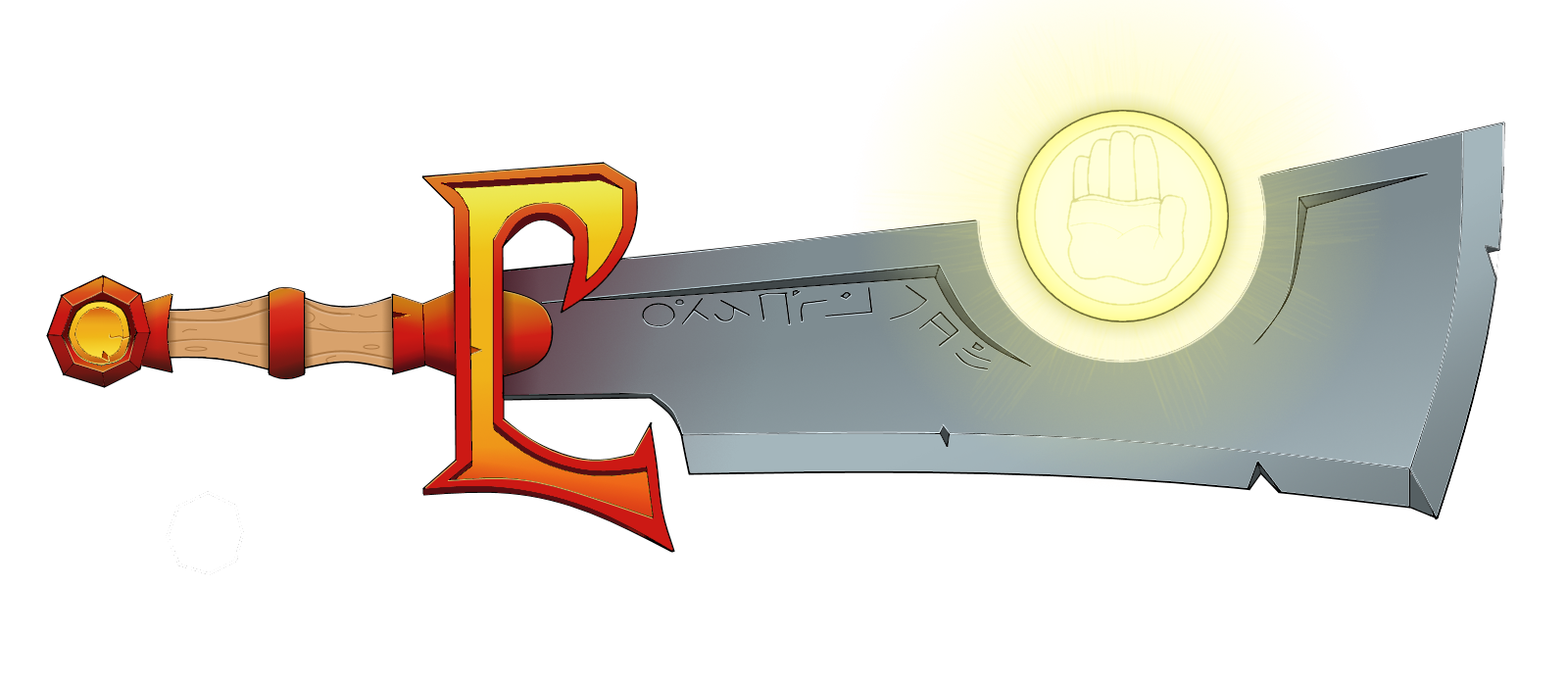
Staff of Sorcerer-Thane Thaurissan
Weapon (staff), very rare (requires attunement by a druid, mage, shaman, or warlock)
You have resistance to fire damage while you hold this magic staff. If you already have resistance, you are immune to fire damage.
The staff has 10 Charges. While holding it, you can use an action to expend 1 or more of its Charges to cast one of the following Spells from it, using your spell save DC: Burning Hands (1 charge), Fireball (3 charges), or Wall of Fire (4 charges).
The staff regains 1d6 + 4 expended Charges daily at dawn.
If you expend the last charge, roll a d20. On a 1, the staff blackens, crumbles into cinders, and is destroyed.
Sorcerer-Thane Thaurissan was the leader of the Dark Iron dwarves during the War of the Three Hammers. When he lost Ironforge to the Bronzebeard clan, Thaurissan retreated to the Redridge Mountains and founded a city in his name. In a desperate attempt to defeat his enemies, Thaurissan accidentally summoned the demigod Ragnaros, which resulted in the sorcerer-thane's immediate death and the formation of the volcanic peak of Blackrock Mountain.
Quel’Serrar
Weapon (longsword), rare
You gain +2 to attack and damage rolls made with this magic weapon.
While wielding this weapon, you gain a +2 bonus to AC
(natural armor). This stacks with other sources of natural armor. As a reaction, you may grant yourself spell resistance (advantage to any saving throw) against a spell that targets you. After benefitting three times from the spell resistance property, it can’t be used again until the next dawn.
Quel’Serrar, sometimes known as the Prismatic Blade, was forged by dragons and granted to the night elves during the War of the Ancients. Currently, it remains dull and forgotten, though it can be reforged by heating in dragon-fire, and being quenched in dragon blood (which gives it the reputation of being a dragon-slaying blade).
Truesilver Champion
Weapon (greatsword), rare (requires attunement)
You gain a +2 bonus to attack and damage rolls with this magic weapon. While holding this weapon, you may utter the inscription upon the blade, granting you 15 temporary hit points. Once this feature is used, it cannot be used again until the next dawn.
Wonderous Magic Items
Book of the Dead
Wondrous item, rare This ancient, musty tome is decorated with inlaid bones from various creatures. The cover and spine are made from dried skin stretched and treated to remain flexible. The ink used to write the magical words and runes inside is blood drawn from the veins of living creatures killed as sacrifices when the book was completed.
Activating this book requires tearing out its spine and destroying it utterly. When the spine is torn, the pages disintegrate, and the spells bound in the book are unleashed, animating up to two medium or small skeleton or zombie warriors (equipped with shields and swords) and two medium or small skeleton archers (equipped with bows and twenty arrows each).
So long as you possess the spine, you may command the undead mentally with a bonus action as long as they are within 60 feet of you. This otherwise acts as a 5th level Animate Undead spell. After 24 hours, however, regardless of what happens, the skeletons disintegrate and lie still, and the Book is utterly consumed. You may attune yourself to the book and keep as a spellbook, in which case all necromancy spells written it cost 1 less mana point when cast by you.
Hearthstone
Wondrous item, rare
This stone is given to every adventurer who leaves his city. A user may have only one hearthstone at any given time, and it is attuned as a Teleport Circle. Requiring one minute to activate, the hearthstone teleports the user to where they last called home. When used, it takes a day to recharge. An adventurer may alter his hearthstone’s location to any indoor building he has spent more than 24 hours in, which replaces the teleport circle’s location.
Spell Shield Amulet
Wondrous item, uncommon
As an action this amulet can be used to act as a 3rd-level counterspell spell, but the effect must include you as a target. Once used, it cannot be used again until the next dawn.
Wisp Amulet
Wondrous item, rare
The wearer of this amulet may transform into a wisp for up to 1 minute. This is a polymorph effect. This property of the amulet can’t be used again until the next sundown.


Appendix A: Languages of Azeroth
A language is a lexicon of words that various characters use to speak to each other and communicate. In World of Warcraft, most races have a unique language they speak that only they can understand. Each faction shares a common language of the dominant race (Orcish for Horde and Common for Alliance).
A language may or may not have an associated alphabet for writing. Several languages may share the same alphabet, or may have a specific alphabet used only for that language.
- There are at least 39 languages on Azeroth.
Languages
Your race indicates the languages your character can speak by default, and your background might give you access to one or more additional languages of your choice. Note these languages on your character sheet.
Choose your languages from your Affiliations Language table, or choose one that is common in your campaign. With your DM's permission, you can instead choose a language from the Exotic Languages table or a secret language, or undocumented language, such as thieves' cant or the tongue of druids.
Some of these languages are actually families of languages with many dialects. For example, the Kalimag language includes the Auran, Aquan, Ignan, and Terran dialects, one for each of the four elemental planes. Creatures that speak different dialects of the same language can communicate with one another.
Alliance Languages
| Language | Typical Speakers | Script |
|---|---|---|
| Common | Humans, Worgens | Common |
| Dwarven | Dwarves | Runic |
| Darnassian | Night Elves | Darnassian |
| Gnomeish | Gnomes | Common |
| Drae'ni | draenei | Eredic |
Horde Languages
| Language | Typical Speakers | Script |
|---|---|---|
| Orcish | Orcs | Common, Runic |
| Gutterspeak | Forsaken | Common |
| Taur-ahe | Taurens | Pictoform |
| Zandali | Trolls | — |
| Thalassian | Blood Elves | Darnassian |
| Goblin | Goblins | Common |
Exotic Languages
| Language | Typical Speakers | Script |
|---|---|---|
| Eredun | Demons | Eredic |
| Celestial | Celestials | Celestial |
| Draconic | Dragons | Runic |
| Giant | Ogres | — |
| Kalimag | Elementals | Runic |
| Low Common | Lesser Races | Common |
| Pandaren | Pandarens | Calligraphy |


Thanks for Reading
This has been a product of many different sources including wowWIKI, wowHead, Wowpedia, and the world of warcraft website. The art work presented in this book is not owned by me or have i been given the rights to use said art work.
This book is the pure work of fan service. In no way is this book intended to make money in any way. This was created as a guide for my personal table, just thought i would share.
I would also like to thank all the artists who's work appeared in this book.
A big shout out to u/Jihia at reddit for creating the Warcraft Hereos Handbook which inspired me to make this and inspired the layout as well. Thanks a lot man, may you go down as a hero in the lands of Azeroth.
Did you know this was all made using GmBinder? I can't stretch enough how fantastic a tool it is for creating homebrew material for 5th edition D&D.

